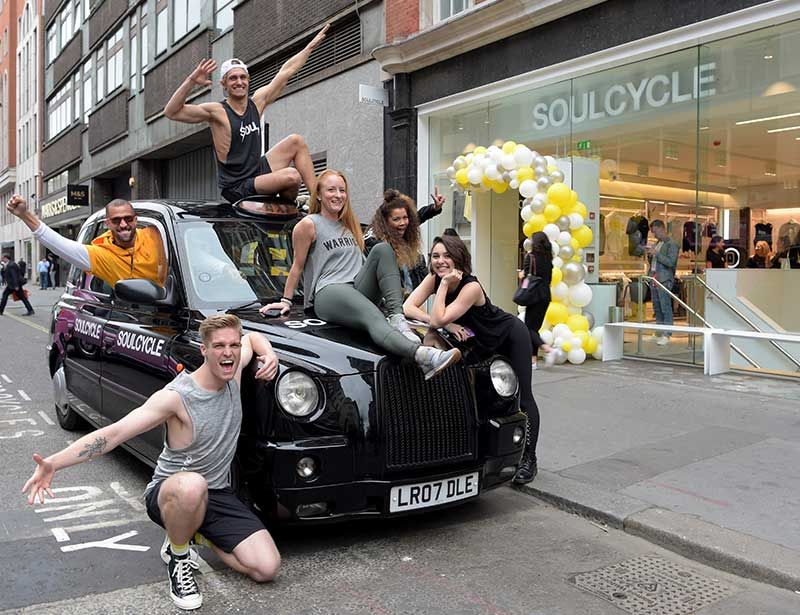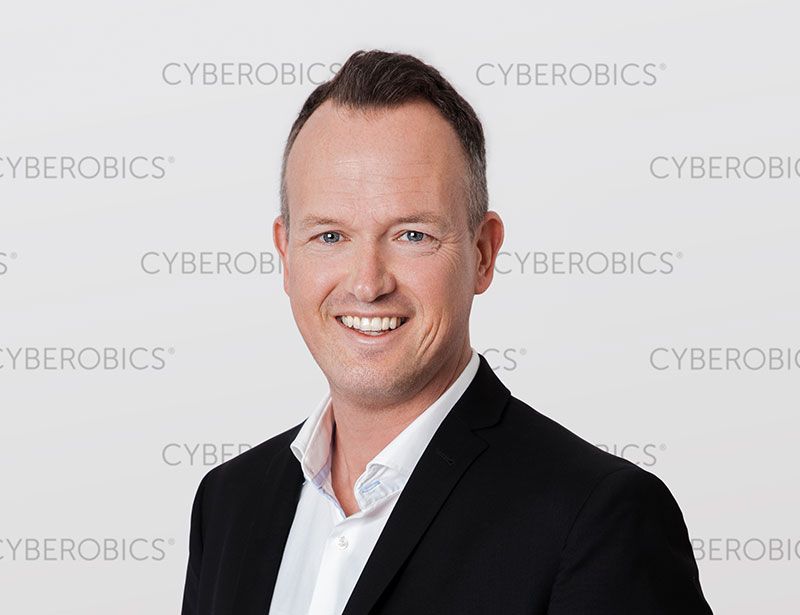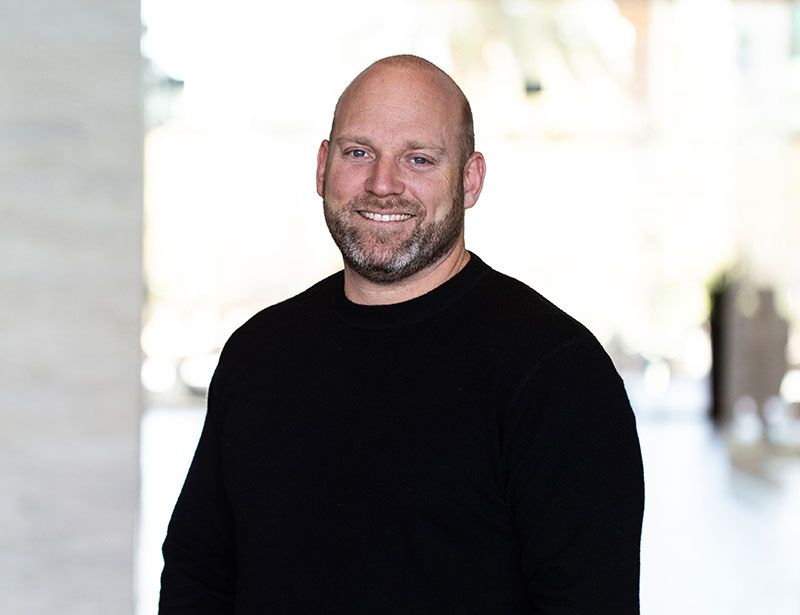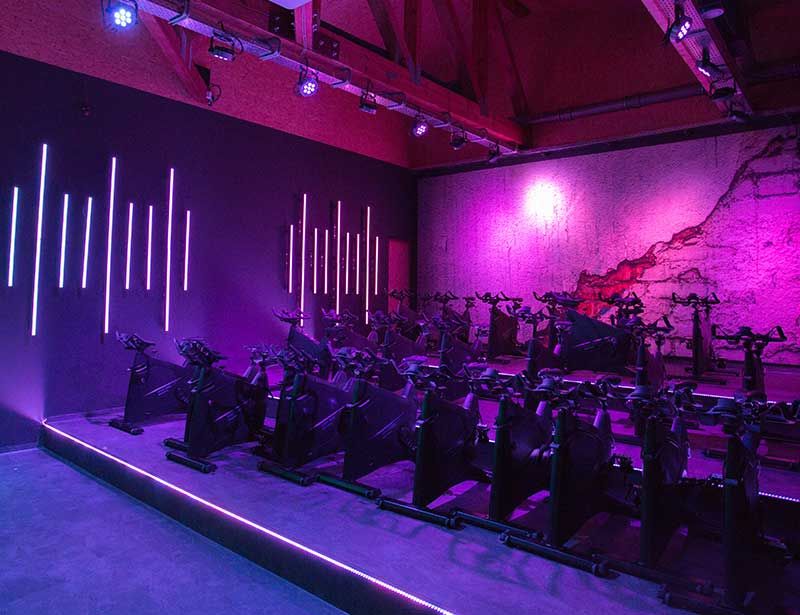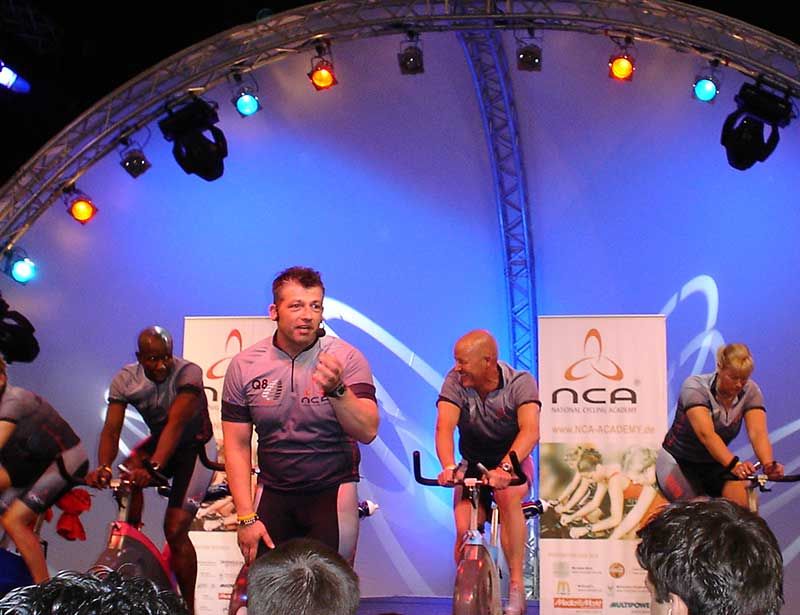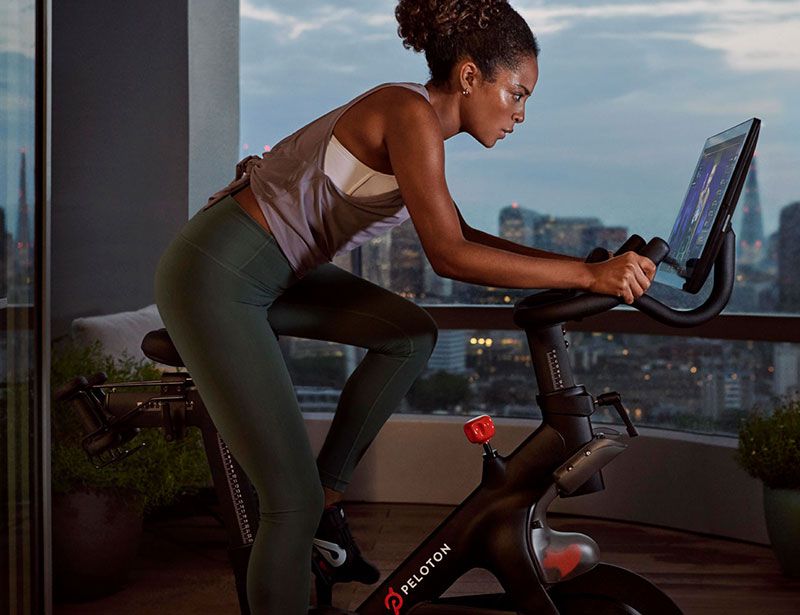A champion of indoor cycling
I have a genuine passion for indoor cycling, and with it a deep-rooted desire to do what I can to empower and grow our whole sector.
Indoor cycling is already an incredibly exciting field but I believe that, by sharing best practice, we can all rise to even greater heights.
It was this belief that, in 2017, led me to conceptualise a new magazine – one that would embrace and champion the very best of indoor cycling across the whole fitness industry, from EMEA to Asia, Australia to the Americas.
My vision was to share ideas, stories, experiences and insights that would inspire the indoor cycling sector, driving even greater innovation and growth.
I envisaged this magazine as being brand- and supplier-neutral – truly not a commercial vehicle, but one designed simply to spread best practice.
It would also be completely free for everyone to read – a valued, and highly valuable, resource for everyone involved in the world of indoor cycling.
That magazine is RIDE HIGH, which since the end of 2017 has been published four times a year. It is fast becoming a must-read for indoor cycling operators and enthusiasts the world over – but we don’t want it to be a one-way conversation.
That’s why we’re inviting you to suggest topics we might like to cover in the magazine, or simply to give us your feedback. All ideas are welcome – just drop us an email: info@ridehighmagazine.com
If you’ve missed anything so far, never fear – we’ve made our entire archive available to read and download, for free, on our new website: www.ridehighmagazine.com
And, of course, if you haven’t yet signed up to receive the magazine, please do so. It is, and will always be, completely free, available to read online and as a PDF download.
Sign up now
We look forward to hearing from you.
Uffe A Olesen
CEO, BODY BIKE International A/S
SoulCycle London: Our verdict
The anticipation has been understandable: this is a brand which, since it opened its first studio in Manhattan in 2006, has built an enviable fan base including the likes of Beyoncé and Jay-Z, David and Victoria Beckham, Lady Gaga, Madonna, Khloe Kardashian and Michelle Obama. And SoulCycle’s appeal reaches beyond the celebs, with an impressive 20,000 people taking classes every day across its 90+ studios.
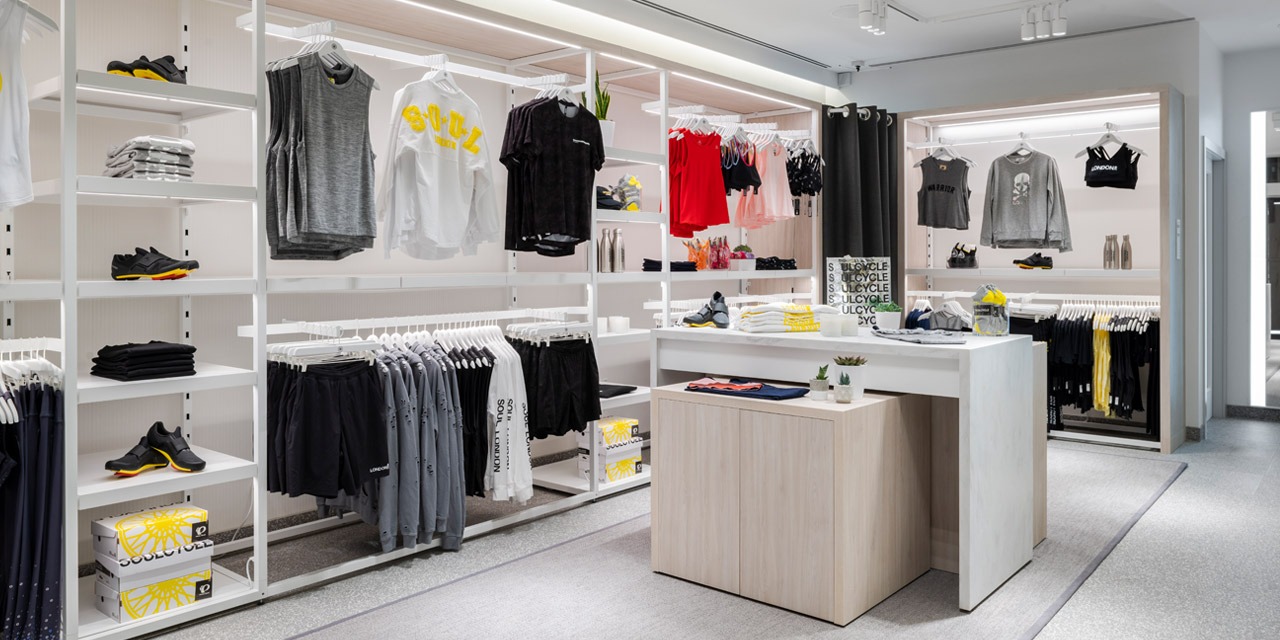 I myself had previously done SoulCycle in Los Angeles and had been wowed by a feelgood factor that – to my non-performance orientated mind at least – still stands head and shoulders above other indoor cycling workouts I’ve done. I had loved the focus on fun, on getting a sweat on but as a side-effect of having a great time.
I myself had previously done SoulCycle in Los Angeles and had been wowed by a feelgood factor that – to my non-performance orientated mind at least – still stands head and shoulders above other indoor cycling workouts I’ve done. I had loved the focus on fun, on getting a sweat on but as a side-effect of having a great time.
I had loved the darkened studio and the candlelight. I had loved the infectious exuberance of the instructor; goodbye English reserve, hello infectious positivity and happy vibe.
I had also loved the fact that, while encouraged to crank it up, I had been left to strike my own balance between enjoyment and exertion. SoulCycle really had lived up to the two halves of its name: the mental benefits for me were as great as the physical, and I left with a smile on my face and a spring in my step.
I was, then, understandably keen to see how the experience would translate and settle in the UK.
Energy Boost
As it turns out, work-weary as I was when I turned up for my Wednesday 6.30pm class,
I would have settled for anything that boosted my energy levels a bit.
Fortunately, SoulCycle didn’t stop there.
From the moment I walked into the light, bright reception area – staffed by a team of around eight front-of-house staff – it felt unmistakably SoulCycle. But what I was really interested to experience, of course, was the workout itself… and it’s great to be able to report that SoulCycle London brings the same positive vibe, the same ability to make 45 minutes pass quicker than any other cycling class I’ve ever done, as I experienced in the States.
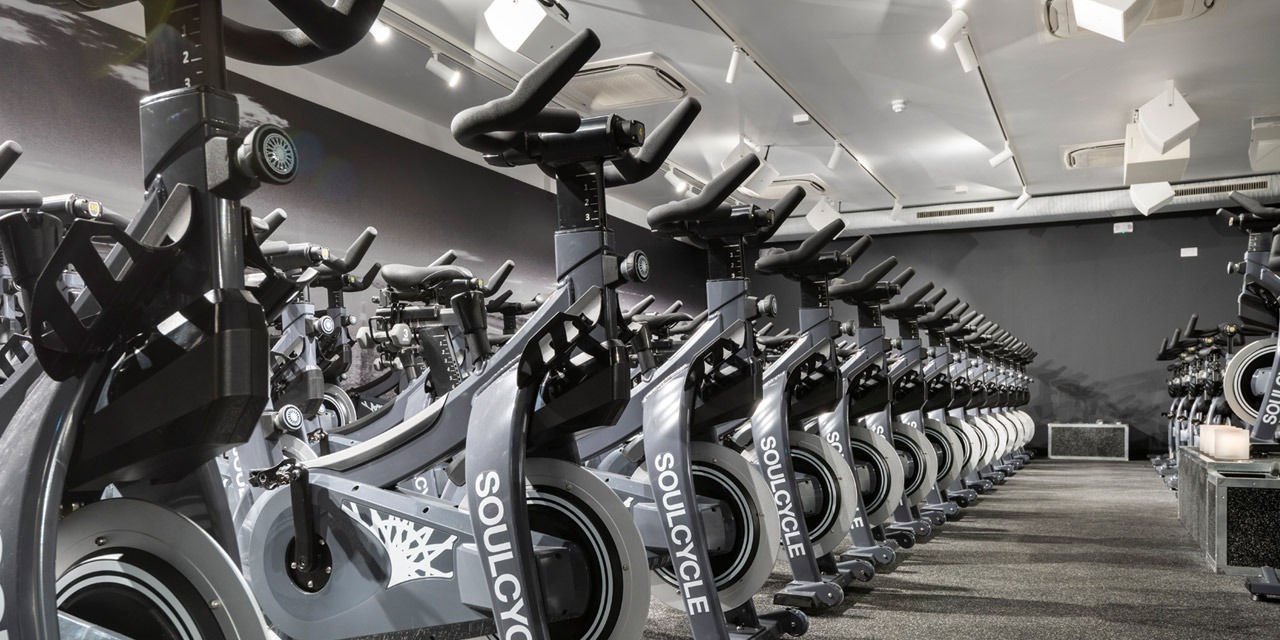 The London studio is packed full of 63 SoulCycle-branded bikes, including some set off to each side of the instructor. No space given up that could be filled with a bike. But that’s the same formula as in the States, and it certainly brings an energy into the room – not to mention a good amount of sweaty ‘I’ve worked hard, I can feel good about that’ heat.
The London studio is packed full of 63 SoulCycle-branded bikes, including some set off to each side of the instructor. No space given up that could be filled with a bike. But that’s the same formula as in the States, and it certainly brings an energy into the room – not to mention a good amount of sweaty ‘I’ve worked hard, I can feel good about that’ heat.
it’s ok to be there for a good time, not necessarily a ‘train until you drop’ time.
Then there’s the fact that the darkened studio – lit by candlelight and, intermittently, by uplighters around the instructor – makes you feel somehow enclosed in your own space, focused not on those around you but purely on yourself, the great music and the instructor on the podium. The other bikes in the room honestly don’t matter once the lights go down.
Star quality
And so to the instructor – such a key element in justifying SoulCycle’s £24 a ride price tag. On the podium for my class was the bubbly Lauren Naomi, one of the London studio’s three UK instructors; the other three have been ‘imported’ from SoulCycle in the US.
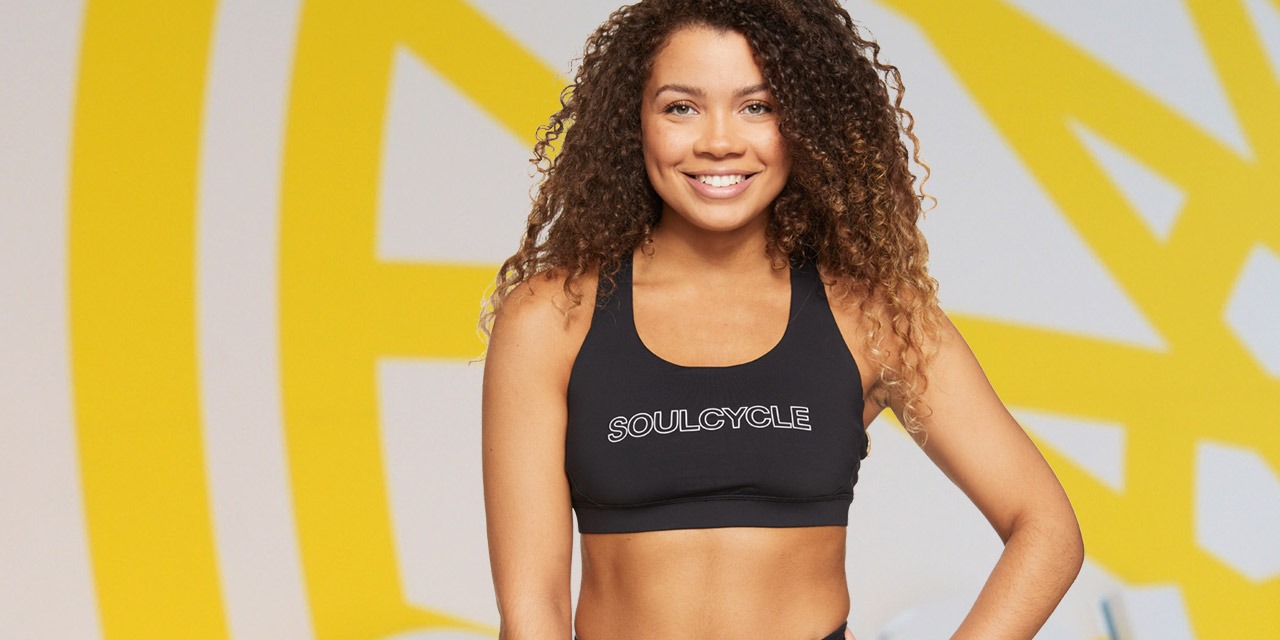
Straight away, two things were evident. Firstly, no instructor is allowed in front of a class until they’ve completed full training in the US. There’s a unique way of doing things at SoulCycle and Lauren Naomi oozed it.
Secondly, SoulCycle’s recruitment policy is clearly personality first, cycling experience second – and I say this not because Lauren Naomi didn’t smash it in the saddle. I say it because her positive, encouraging presence at the front of the room felt very natural while still outgoing, no doubt due to the fact she’s also a professional singer, dancer and actress. This is someone who’s used to being in front of a crowd.
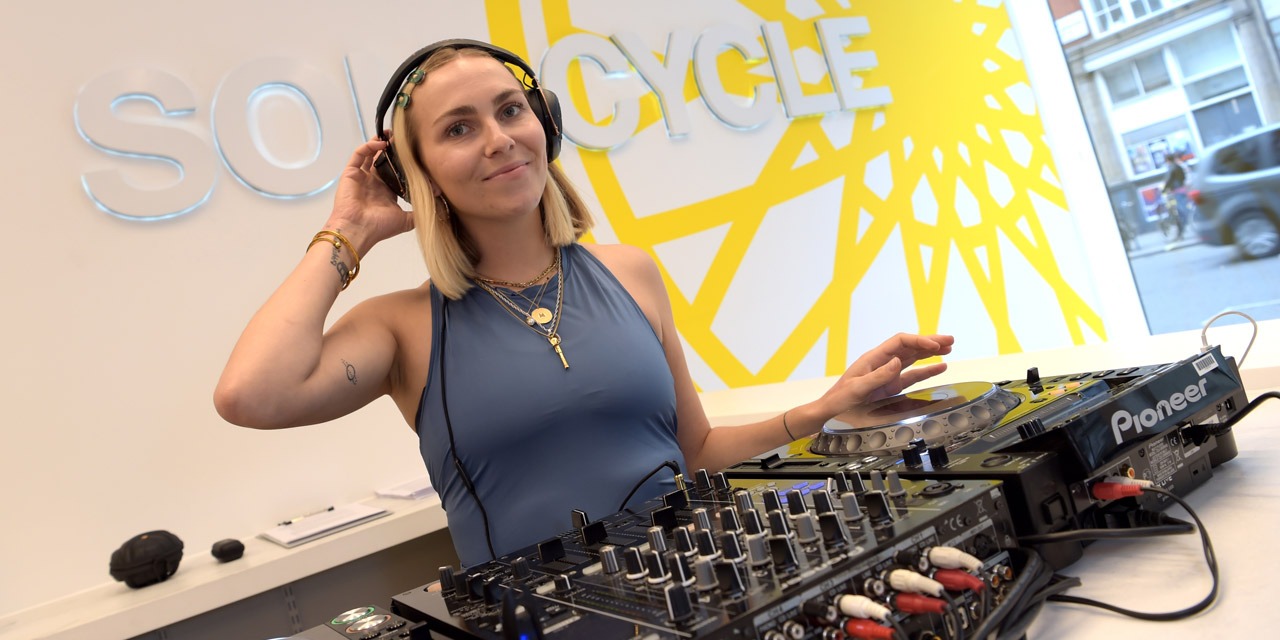 I also say it because of her very honest, and with it very engaging, comment at the end of the class to those struggling to disengage their cleats: “Don’t worry. I hadn’t even got on a bike until I went to the States for my SoulCycle training. The first class I did, I was still stuck in the corner on my bike when everyone else had left the room!”
I also say it because of her very honest, and with it very engaging, comment at the end of the class to those struggling to disengage their cleats: “Don’t worry. I hadn’t even got on a bike until I went to the States for my SoulCycle training. The first class I did, I was still stuck in the corner on my bike when everyone else had left the room!”
It was all very natural, very engaging, very encouraging – “as long as your legs are still moving, you’re doing great”. Ultimately, very SoulCycle. It was OK to be there for a good time, not necessarily a ‘train until you drop’ time… just get a sweat on, get a bit out of breath, but have a smile on your face too – don’t take things too seriously. Immerse yourself in the tunes and the moment and dance your way through the class.
The cult of Soul
Interestingly, while around half the class were on their first ever SoulCycle ride – with its price tag of £16 to get people in and hooked – a good number were already regulars just one week in to the studio’s lifetime, committed to multi-ride packages: buy 30 rides as a package and the price comes down to £19 per class; a 10-class package brings the per-class price down to £21.
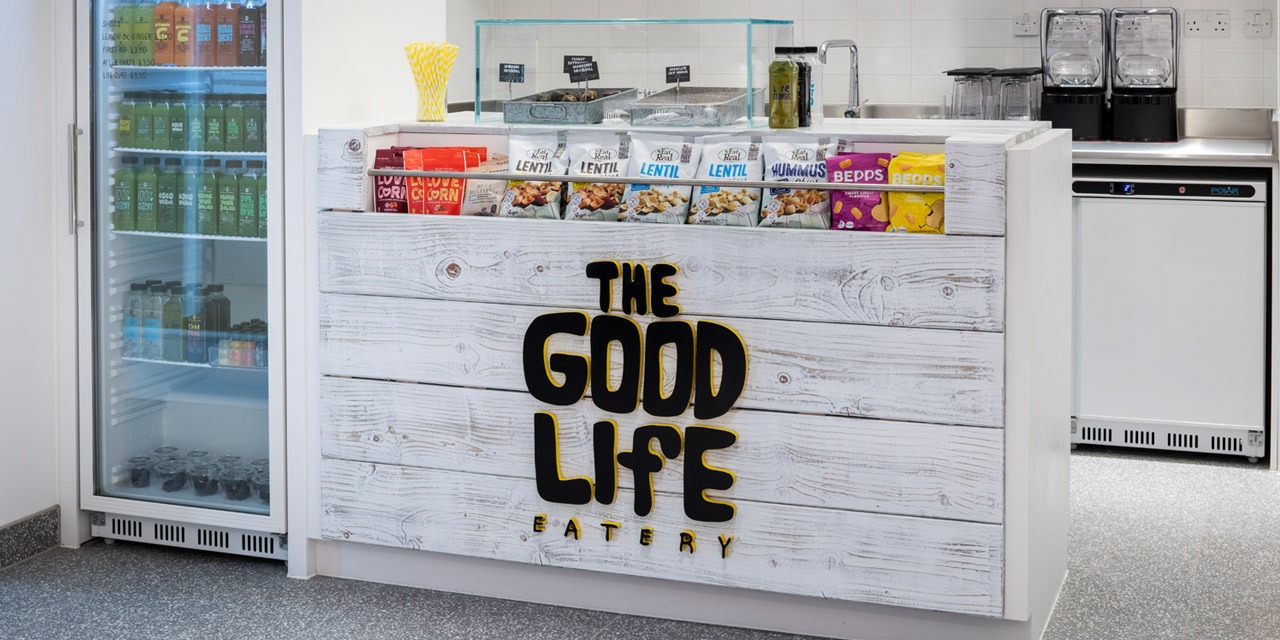 But however, people are buying their classes, whatever their level of commitment, buying them they most certainly are. The eight classes taking place on most weekdays, and the five a day at weekends, are filled almost as soon as they open for booking; some wait lists for the next day were, I was told, already 30-strong. People are champing at the bit to get in, and with the levels of engagement already being shown, it seems to be more than a novelty factor.
But however, people are buying their classes, whatever their level of commitment, buying them they most certainly are. The eight classes taking place on most weekdays, and the five a day at weekends, are filled almost as soon as they open for booking; some wait lists for the next day were, I was told, already 30-strong. People are champing at the bit to get in, and with the levels of engagement already being shown, it seems to be more than a novelty factor.
is London ready for Soulcycle and its £24 classes? the answer appears to be ‘yes.
So enthusiastic are they, in fact, that some of the already-regulars in the class – unprompted by Lauren Naomi, who was comparatively restrained in her “come on Wednesday!” cheerleading – indulged in a bit of spontaneous mid-class whooping. The American enthusiasm of SoulCycle is, it seems, infectious.
To those many observers asking the question ‘is London ready for SoulCycle and its £24 classes?’… the answer appears to be a resounding ‘yes’.
About SoulCycle London
Location
3–4 Great Marlborough Street, London
Size
3,500sq ft of cycling studio + retail space
Bikes
63
Price
£24 for a one-off class;
packages also available
Food & beverage
The Good Life Eatery
Oliver Schulokat
How would you describe CYBEROBICS?
The CYBEROBICS brand stands for a high-quality digital training experience. Our virtual group exercise classes allow users to work out with the best trainers in the US, at the most breath-taking locations and do so entirely flexibly – whenever and wherever they choose. Plus, it’s all tailored to their personal training goals, their preferences and their individual training level.
Our ultimate mission is to harness the power of digital technology to make it possible for more people, all over the world, to enjoy fitness training and thus make regular exercise a natural part of their lives.
What is your model?
We originally launched CYBEROBICS in the B2B segment, with a focus on fitness studios, corporates and hotels. In 2018, we took the bold step of addressing the B2C segment by launching a CYBEROBICS app, which is now available in 21 countries.
We offer a training experience that’s fun, enduringly motivating and easily accessible.
This is the path we’re going to pursue in future – a combination of B2B and B2C – because we’ve seen that the two segments complement each other really well.
What is the opportunity you see for CYBEROBICS?
Fitness training is a wonder-drug: it maintains health, gives you energy in your everyday life, lifts your mood and keeps you feeling good. I believe everybody wants to work out. It’s just that some people aren’t able to motivate themselves to train regularly – to make it a firm fixture in their everyday lives. That’s where CYBEROBICS comes in. We offer a training experience that’s fun, enduringly motivating and easily accessible, which means people are much more likely to choose to integrate it into their everyday lives.
As a digital product, it’s also very convenient – it can be used any time, anywhere – while its attractive price point and flexible contract models make it very accessible.
All these factors add up to the huge potential for CYBEROBICS in the fitness market.
How important is the digital nature of the product?
I see a very clear trend towards increased use of digital products; people no longer work out at the gym alone.
The aim has to be to offer a digital product directly within the club which members are also able to use outside of the club.
In my opinion, there are two main reasons for this. Firstly, the younger generation – I like to call them the ‘on-demand generation’ – is used to having things precisely when they want them, regardless of time or place, thanks to the ubiquity of digital media and devices. That’s how it is in other parts of their lives, so they expect it in fitness too, and that expectation will only grow over the next few years. I’m sure there will always be fitness studios, but people will combine working out at the gym with training at home in a way that fits perfectly with their everyday lives.
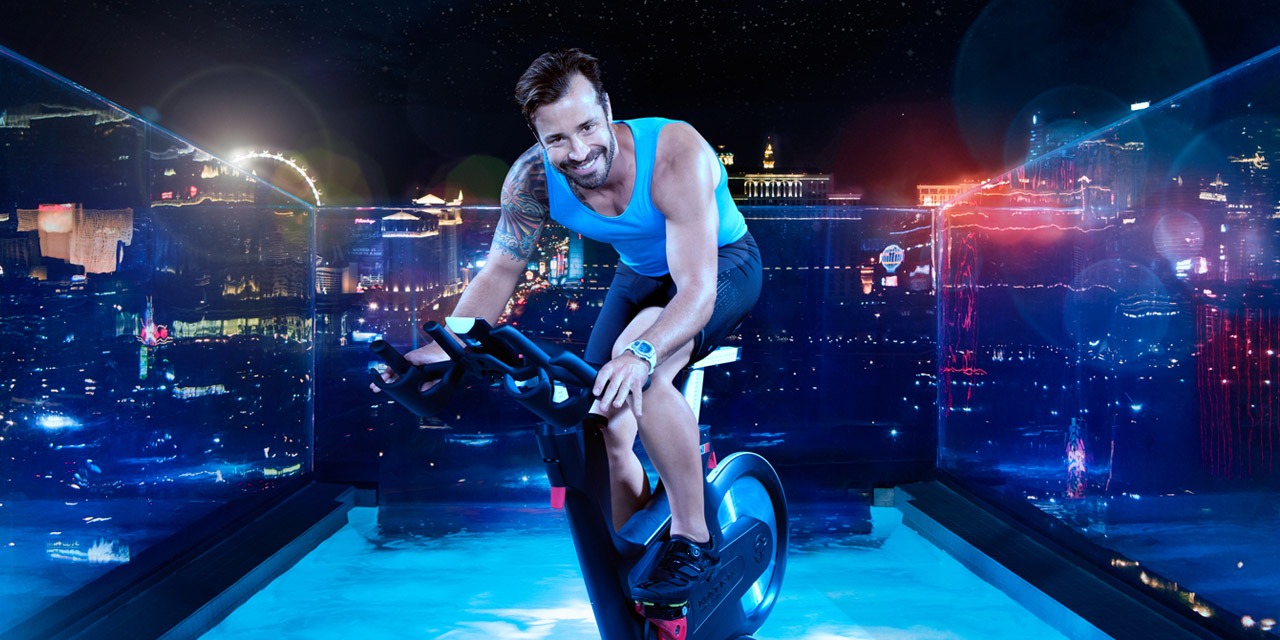
Another important development is the technology now present in most people’s living rooms. A growing number of people have large TV screens that are connected to their home internet, or that link up with services and consoles like Apple TV, Amazon Fire Stick and Chromecast. If you’re able to offer fun options for working out in this environment, then people will undoubtedly use them.
How are you embracing this new technology?
We’re using all of this technology, creating the perfect experience for any CYBEROBICS user whatever device they use to access our classes – all at a very attractive price point.

The CYBEROBICS app was launched in the spring of 2018 and is now available in 21 countries. Using the app, CYBEROBICS workouts can be played on all the devices people already have at home: all mobile phones and tablets (iOS and Android), internet, Apple TV, Chromecast, Amazon Fire and Roku.
The growth rates are huge and we will pursue this path systematically while introducing new features and tapping into new markets.
Many gyms have been slow to embrace virtual group exercise. Why do you think this is?
Many operators of gym facilities or fitness chains are still blissfully ignorant of the aforementioned developments in the digital sphere. This is because, thus far, the trend has not been hugely evident in day-to-day business, so gym owners have seen no reason to address it.
As this trend gathers pace – which it inevitably will – many more providers in the fitness industry will wake up and find they are forced to react quickly in order to survive. For some, unfortunately, it will already be too late. They will realise that other players – who will sometimes come from outside of the fitness industry altogether – have already taken over part of the business.
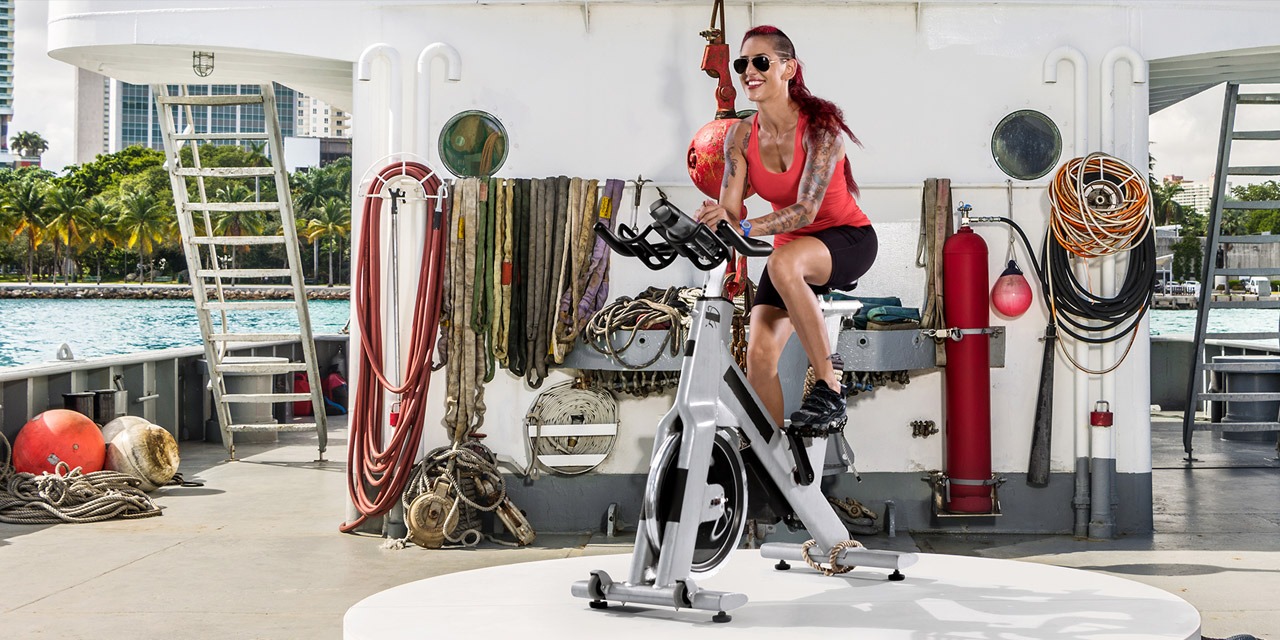 Club operators need to exploit digital developments: the aim has to be to offer a digital product directly within the club which members are also able to use outside of the club. In this way, the club’s offering can be expanded into other areas of members’ lives and an emotional connection established. This is the role we see for CYBEROBICS, which can be used in the studio, but also at home and while travelling.
Club operators need to exploit digital developments: the aim has to be to offer a digital product directly within the club which members are also able to use outside of the club. In this way, the club’s offering can be expanded into other areas of members’ lives and an emotional connection established. This is the role we see for CYBEROBICS, which can be used in the studio, but also at home and while travelling.
If a club fails at this, then members will use the digital offerings from other providers and there’s a risk the club will lose them over the long term.
Do you believe virtual classes will ever replace live, instructor-led classes?
I think we will continue to see a combination of both, but with a clear trend towards virtual training – including live streaming. Live classes will always have their place, but people like flexibility in the way they work out: one day they might want a convenient workout at home; another day, they’ll go to the gym.
What have been CYBEROBICS’ most important innovations in group cycling?
CYBEROBICS offers a wide array of cycling experiences for all fitness levels – all led by the best trainers from the US and all in extraordinary locations. One cycling class was filmed by the pool at Hugh Heffner’s house, for example, with a view of downtown Las Vegas. For another cycling class, we rented a magnificent yacht that sails through Miami Bay for the 60 minutes of the workout. That’s what makes CYBEROBICS cycling classes unique.
Cycling through beautiful landscapes in training groups and virtual cycling in artificial environments are also part of our portfolio. In addition, we integrate key fitness trends into our cycling classes – HIIT training, for example. We’re always trying to offer our users something new by picking up on current trends and incorporating them.
What do you feel CYBEROBICS brings to cycling studios?
A sense of immersion. Thanks to the high-quality production of our classes, our users actually feel as though they’re training in the place where the workout is shot. This demonstrably boosts motivation and enjoyment of training – and in turn, the workout becomes more effective.
Ideally, the spaces in which people are cycling should offer a cinema-like atmosphere with a large screen, dark walls, really good sound and lighting that’s not too bright. Only then can the sense of immersion be experienced to full effect.
My advice to operators is very simple: by all means, combine them with live classes initially, or even in the long term, but integrate virtual classes as quickly as possible – not just cycling but across the board. And spare no expense in fitting out the studio with all the necessary technology, creating an entirely new training experience for members.
How are you using CYBEROBICS within your own clubs?
We have two CYBEROBICS studios per club in more than 230 RSG Group clubs – McFIT, JOHN REED and High5. One is for indoor cycling, the other for all other CYBEROBICS classes.
We currently deliver more than 5 million CYBEROBICS classes a year, with new workouts frequently added, and they have been well-received. We also offer members access to our CYBEROBICS app, so they can take part in classes at home or while travelling too.
Digital will be a key focus at THE MIRAI too [RSG Group’s 20,000 sqm, free-to-use megaclub that’s scheduled to open in Germany in 2022], so CYBEROBICS will play an important role here. We will use THE MIRAI as a ‘future lab’ for continual development of CYBEROBICS.
You also work with hotels and corporates. What’s the latest news here?
In both areas, we’re seeing a strong momentum towards digital fitness solutions.
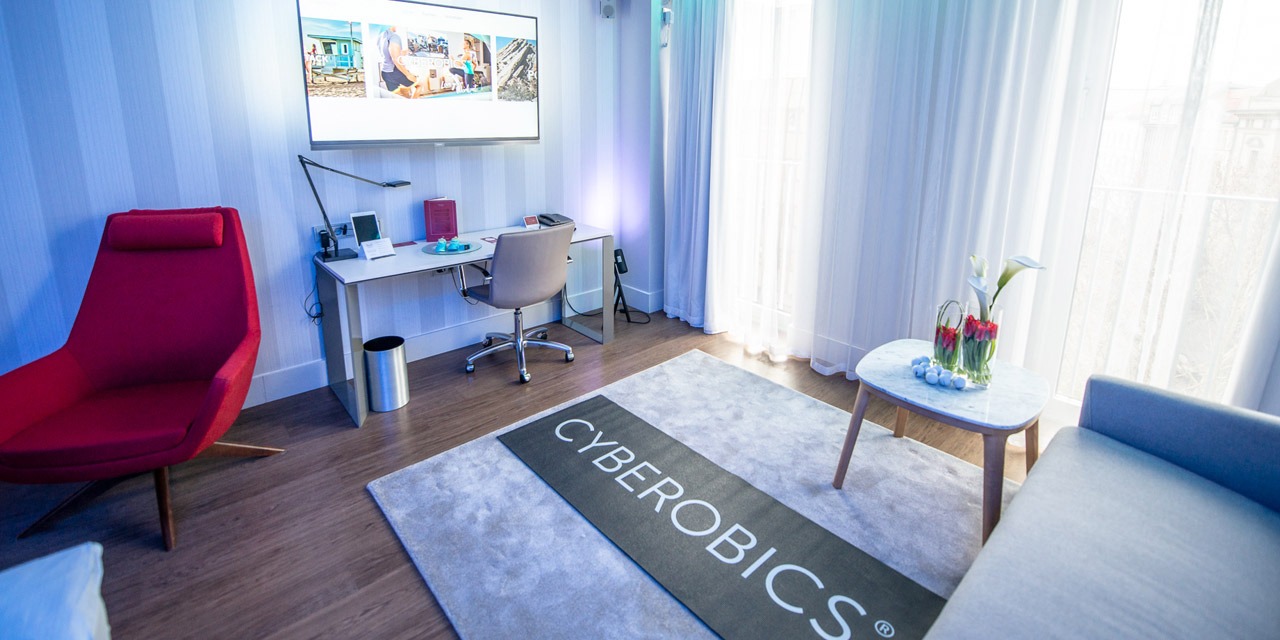 In the hotel industry, lots of providers are already using CYBEROBICS. The NH Hotel Group, for example, has started creating ‘mood rooms’ in which you can set different moods using a tablet; choose ‘active mood’ and the light and sound changes automatically, the curtains close and a CYBEROBICS class begins on the TV. The TUI Group has likewise started using CYBEROBICS in its hotels.
In the hotel industry, lots of providers are already using CYBEROBICS. The NH Hotel Group, for example, has started creating ‘mood rooms’ in which you can set different moods using a tablet; choose ‘active mood’ and the light and sound changes automatically, the curtains close and a CYBEROBICS class begins on the TV. The TUI Group has likewise started using CYBEROBICS in its hotels.
Cruise company Aida is gradually introducing CYBEROBICS on all its ships, both in the cabins and in its workout studios, as well as on large screens on the pool deck so people can take part in cycling classes against the glow of the evening sunlight, for example.
The RSG Group, which owns CYBEROBICS, is also working with more than 600 companies in the area of corporate fitness. Here, too, the trend is towards in-house gyms that incorporate CYBEROBICS studios, combined with access to the CYBEROBICS app to train at home and during breaks at work.
What do you believe is the secret of CYBEROBICS’ success?
Without doubt, it’s the conceptual approach and the quality of the content. Our basic idea is not merely to replace the live trainer by filming them and then projecting them onto the wall in the studio, but rather to create a unique training experience. To achieve this, we have spared no expense or effort in production.
In the future, we plan to enhance the workout experience using virtual reality.
The workout concepts are created by our sports scientists, while scouts in the United States look for the right locations and hold extensive trainer casting sessions. Once the locations and trainers have been selected, the instructors are briefed on how to carry out the workout and we do rehearsals; only once they have mastered the workout perfectly is it filmed.
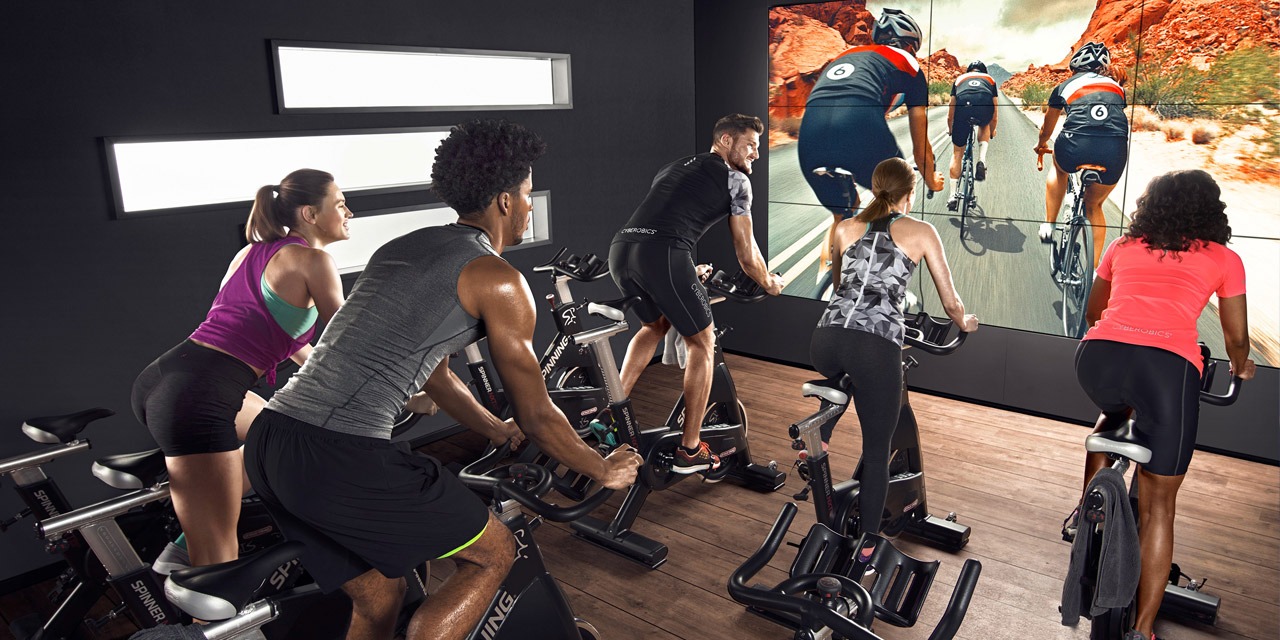 For this, we use a team and equipment worthy of a Hollywood production, filming in 4K quality and with multiple cameras to capture the action from all angles. After post-production in Berlin, our music managers compose a perfectly tailored soundtrack specific to each workout and we record voiceovers, currently in five different languages: English, German, Spanish, Italian and Polish.
For this, we use a team and equipment worthy of a Hollywood production, filming in 4K quality and with multiple cameras to capture the action from all angles. After post-production in Berlin, our music managers compose a perfectly tailored soundtrack specific to each workout and we record voiceovers, currently in five different languages: English, German, Spanish, Italian and Polish.
In the future, we plan to enhance the workout experience – beyond the quality of the content – with the use of new technologies such as AR and VR.
What will be the next big trend in fitness, and is CYBEROBICS already working on this?
Live streaming of classes is already available but is not yet a mass product. That’s something that will undoubtedly grow. Virtual participation in classes at home is also set to grow, so people don’t have to miss out on the group experience entirely. Here, too, the possibilities of digitisation are endless. We are working intensively on both of these areas at CYBEROBICS.
Also, as I just mentioned, we’re going to try using augmented and virtual reality, which is already proving hugely popular in the gaming industry. There’s currently still a lot of potential for optimisation, but I’m convinced that further development of this technology will offer opportunities for the creation of exciting new CYBEROBICS experiences in the future.
What’s your view on the threat of technology like Peloton?
Peloton’s approach is a good one, and it shows that the home market offers huge potential. I think we’re all just at the beginning here; future developments are going to be huge. At CYBEROBICS, we’re reviewing whether – and in what form – we’re able to harness these possibilities.
What’s the future of indoor cycling?
When we, as CYBEROBICS, look at the cycling market, we see that successful concepts always offer a special experience, be it SoulCycle in the boutique club segment or Peloton, with its similar approach but for the home market. Meanwhile, clubs and studios around the world are striving to create engaging cycling spaces, with great design and AV systems.
In the future, we believe virtual reality offers huge potential for cycling. In many areas of fitness, the use of VR goggles presents a problem due to the risk of injury – when participants are moving freely, they quickly lose orientation when wearing the goggles. With cycling, however, the user is ‘stationary’ and can, therefore, use VR goggles much more safely. It won’t be long before technology allows us to introduce VR, including group experiences, into cycling classes.
Ryan Junk
When did Xponential Fitness acquire CycleBar, and why?
Xponential acquired CycleBar on 30 September 2017 and took over the business on 1 October 2017.
Cycling is such an intuitive discipline and so important to health and fitness – you don’t have to educate the consumer. It’s also one of the main modalities in boutique fitness. But while SoulCycle had already done a phenomenal job of putting boutique fitness on the map – it let the world know how different boutique fitness is from the big boxes – nobody other than CycleBar was offering a franchise package for boutique cycling. That made it a clear acquisition prospect for Xponential Fitness.
When and why did you join CycleBar?
The moment I saw the CycleBar branding and programming, I was impressed. It was also a turnaround project rather than a start-up, which was a challenge that appealed to me. However, my number one reason for joining Xponential Fitness was Anthony [Geisler, CEO of Xponential] himself – his exciting vision for the overall business.
I started in my role as president of CycleBar on 1 November 2017, when we brought in the new corporate team.
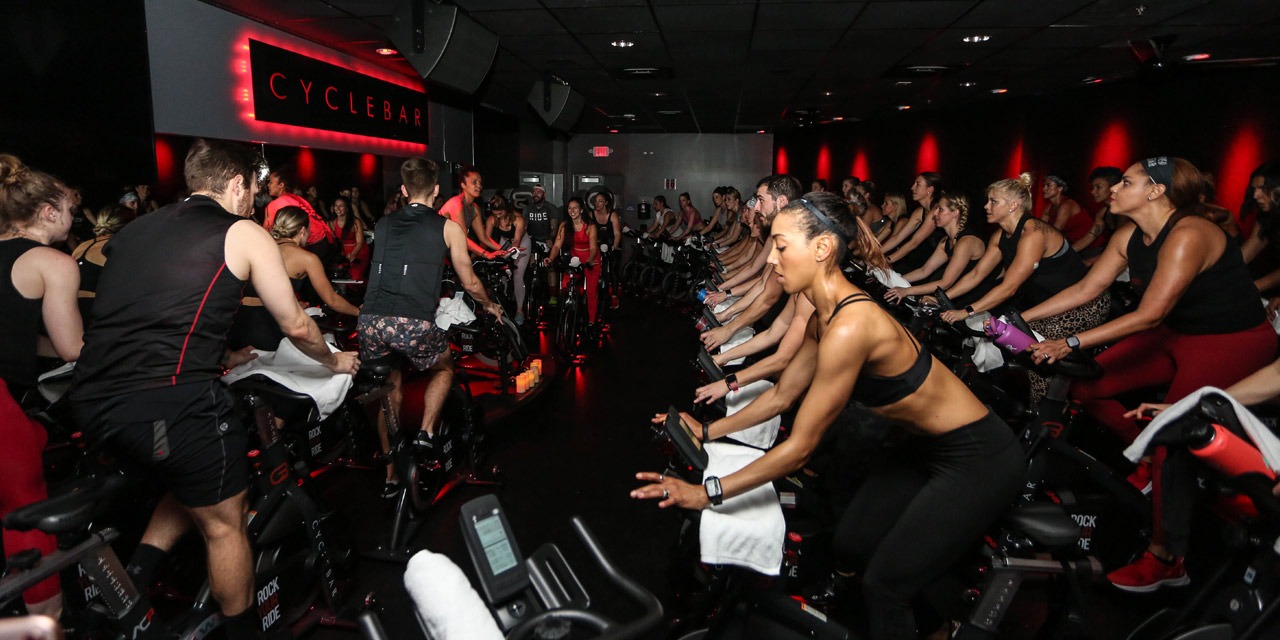 What’s your background, and how has this shaped your approach to CycleBar?
What’s your background, and how has this shaped your approach to CycleBar?
I’ve always been passionate about fitness and I love helping people get healthy and in shape.
I have a background in franchising, helping franchisees of brands such as Crunch and UFC Gym, so my primary customer has always been the franchisee. I’ve been there to support the people who service the members, helping them grow their careers in the fitness space and make money through franchising.
This experience as a third-party advisor has allowed me to see things from both sides – franchisor and franchisee – and has given me valuable insight into how to speak to franchisees, bridging the gap between them and the franchisor to build a relationship of trust. This has very much shaped the way I approach things at CycleBar.
In what shape was the CycleBar business when you bought it?
The branding and programming were good, as was the overall vision: to create an experience, in a motivational and inspirational environment, that let people escape their everyday.
But operationally the business needed attention. There had never been a national digital campaign, so what we effectively had were hundreds of separate mom and pop studios being marketed across the country. Those studios hadn’t been allowed to sell memberships – just packages – and weren’t even allowed a phone to take enquiries. They had also been instructed to only open for classes, and to close the rest of the time.
75 per cent of the studios weren’t making money when we bought the business
Build-outs had also become too expensive – US$750,000 on average, which we felt was about US$250,000 too expensive. It wasn’t a problem of location. The sites were simply too big.
The outcome was that 75 per cent of the studios weren’t making money when we bought the business, so we had a lot of very worried franchisees.
However, everything that was wrong with the business was what Xponential is good at.
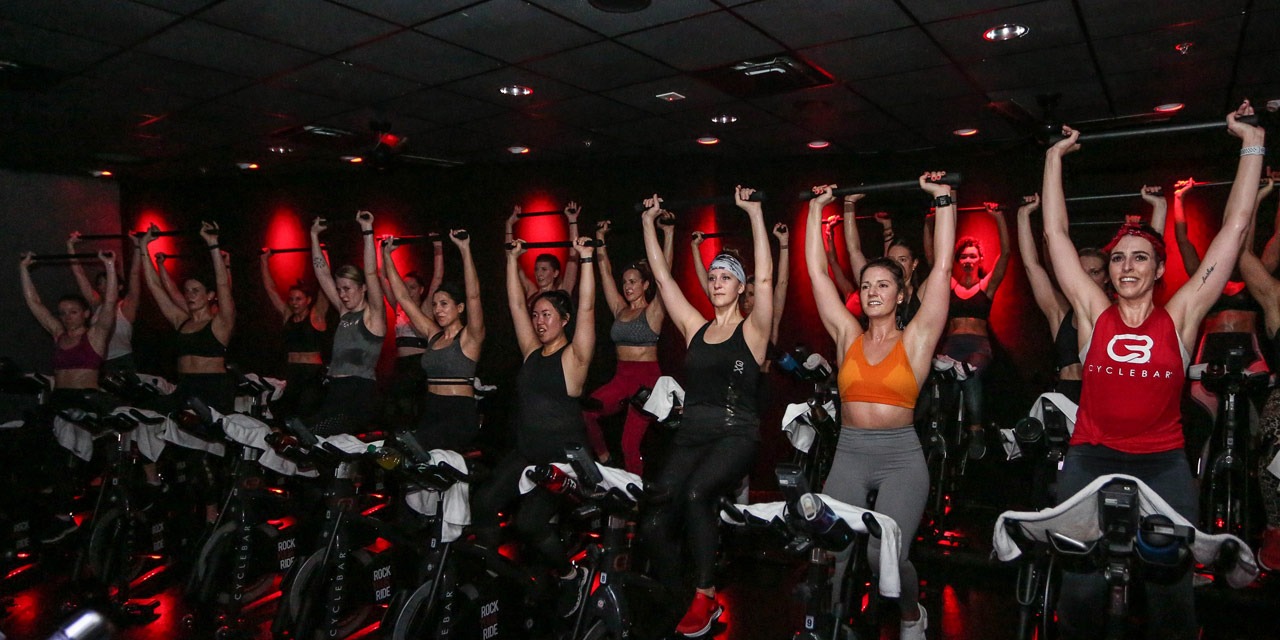 What changes have you brought into the business?
What changes have you brought into the business?
There were two main prongs to our approach: build-out and operation.
In November 2017, we stopped selling franchises for three months – we didn’t want to sell something we knew wasn’t working. We stopped signing leases too, as the sites were too big, and anyone who had already signed a lease was supported in bringing down build and start-up costs.
Then we looked at the studio model in detail. We wanted to keep the same number of bikes – 50 – so we looked at what else we could strip out to make studios smaller and less expensive. The first thing was the large DJ booth. DJs generally only came in once or twice a month, and when they did, they tended to set up next to the instructor, so we took the booth straight out. We changed the flooring – it actually looks and performs better now, as well as being more affordable – and took out the risers and the curved wall at the back of the studio that was designed to make it feel like a theatre. Members weren’t worried about it and it immediately freed up lots of space.
Additionally, showers are now only offered if the market demands them, and we removed the wall that funnelled people through reception. Not only did this free up space, but it also means people going past the studio can now see in – not into the studio itself, but to where people put on their cleats before class. That’s very important, because we know the average person goes past three times before they come into the studio. One of the things they’re looking for are people who look like them. They also want to see somewhere that looks busy.
classes need to be 40 per cent full to break even. That said, we aim for a minimum of 60 per cent
Nowadays, CycleBars are built for under US$500,000, on average – but importantly, we’ve kept the premium feel. We’ve just shrunk the size to 2,000–2,500sq ft.
We’ve also kept customer service levels high, through touchpoints that don’t feel forced. A premium offering, and premium service, have to be in place to earn you the right to ask for a sale.
Studios are also now open all the time, with phones to take enquiries, and franchisees can sell memberships as well as packages so they have recurring income. They also pre-sell memberships. There was some resistance to this, but we’ve gone from pre-selling 77 memberships per location at first, to now averaging 320. That’s already enough to break even – classes need to be 40 per cent full to break even. That said, we aim for a minimum of 60 per cent, and many of our new studios are exceeding that.
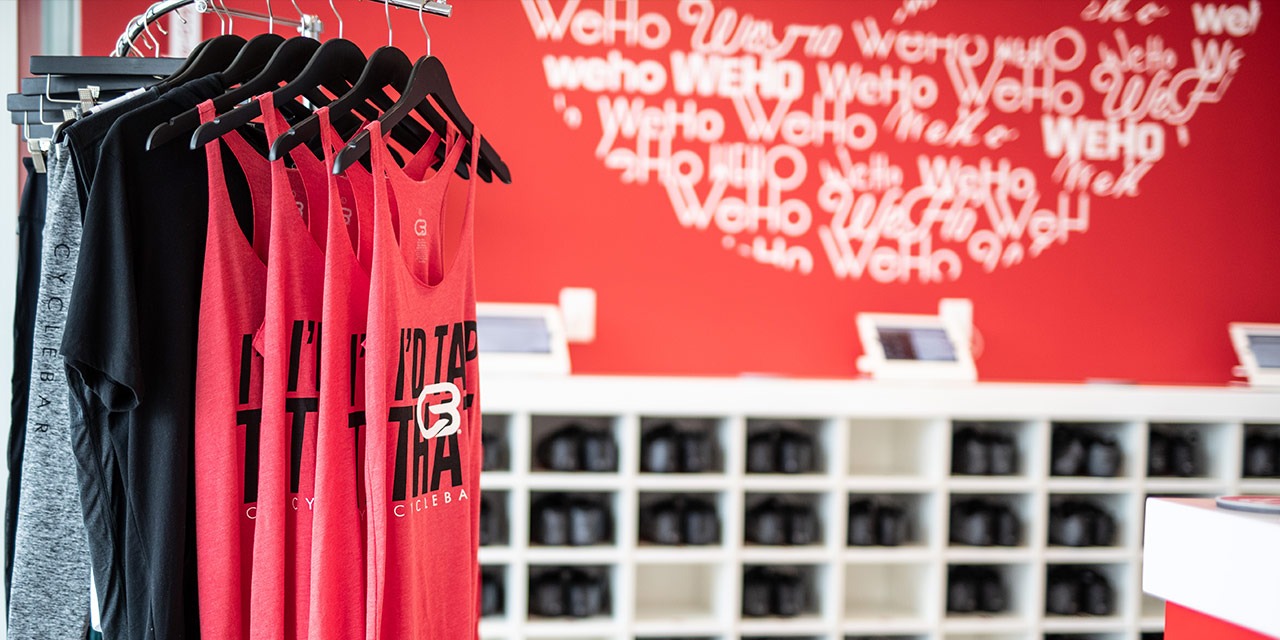 In what shape is the business now?
In what shape is the business now?
Before we took over, revenue averaged US$300,000 per studio, with high levels of debt. Now our legacy sites – the studios that were open before we took over – are averaging US$433,000 annual revenue. These studios have seen consecutive growth for the last 17 months, with a 19 per cent average growth in revenue.
Meanwhile, our new studios average US$620,000 revenue a year.
We’re still not there yet – we still have 70 sites on the old operating system – so although there’s already been a huge uplift, there’s more to come once all stores are converted and settled into the new systems. We’ll finish that work this year.
Crucially, it’s revenue per store that our team at HQ are compensated on, not how many stores or franchises they sell. We want our franchisees to be successful, and our corporate support team to share in that success.
What do you see as the brand’s USPs?
There are a number of USPs, starting with our choice of programmes. We offer three different styles of class: Connect Ride, which is lower intensity, more spiritual, with a connection between instructor and participant; Classic Ride, which is more about stats and data; and Performance Ride, which centres on racing and competition.
Our director of education, Tevia Celli, designed Performance Ride, but she felt we should do the other two styles of class too. It allows sites to choose what’s right for their community; if they offer all three classes, members can choose the class that feels right for them, so it broadens the appeal.
The way we monetise is another USP, selling memberships as well as packages.
And then there’s our instructor training: we start educating them, at our expense, before they even start working for a franchisee. We help them understand how we instruct, so even if they’ve never taught at a boutique before, they have a chance of passing our audition. If they do, there’s ongoing CPD and even a chance to become a master trainer if their classes are consistently at 70+ per cent capacity. So, there’s career progression, not to mention a chance to become an influencer – our master trainers have a big social media following.
But the real X factor of CycleBar is that the studios have a ‘mom and pop’ feel, and that’s precisely because they’re franchised rather than corporately owned. It takes hospitality to a whole new level when it’s someone local running it – someone who really knows the market and the local community. But then all of this is supported with systems and training from HQ to ensure everything runs smoothly and efficiently. It’s the best of both worlds.
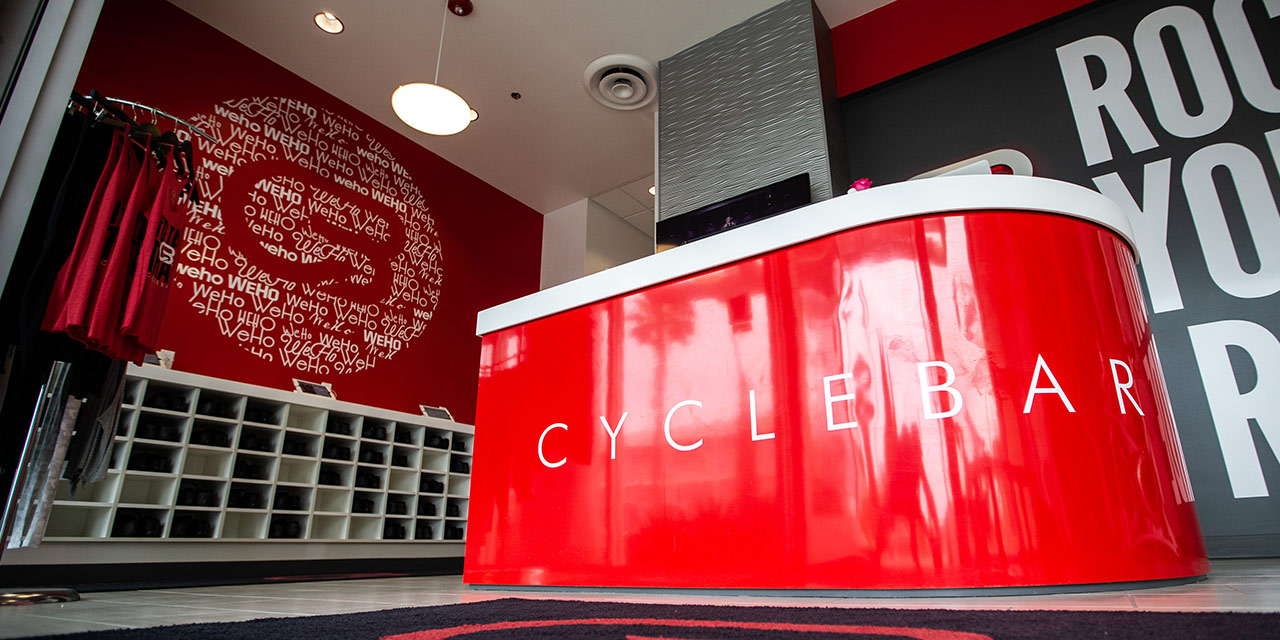 What are your growth plans?
What are your growth plans?
We’re currently in 38 states in the US, with 42 sold: we have 161 sites open and operational, with another 50 signed and pre-selling memberships [figures correct as at 1 May 2019].
We’re in three other countries already – Dubai, the UK and Canada – with other markets such as Japan, Saudi Arabia and South America in the pipeline. Roll-out hasn’t yet started in the UK, because we’ve brought in new equity partners who want to take on some of the other Xponential brands too – they will be the master franchisee for Xponential in the UK and we’re just finalising that deal. But they have aggressive plans, including 20–30 CycleBar studios.
Across all markets, I expect to open a further 70 CycleBar locations this year, taking us past the 250-site mark. The goal will be for an average US$600,000 revenue per site across those 250+ locations by the end of the year.
2020 will then see a big push around technology to drive engagement: an app to reach beyond the studio, ‘frequent rider’ points, heart rate training and tracking technology.
In five years’ time, I want to be at 600 locations – of which 100 international
In five years’ time, I want to be at 600 locations – of which 100 international – and US$750,000 revenue per studio.
Ultimately, I think international is where our growth will be. I expect us to cap out at around 600 locations in the US, but interestingly, I think cycling is bigger outside of the US.
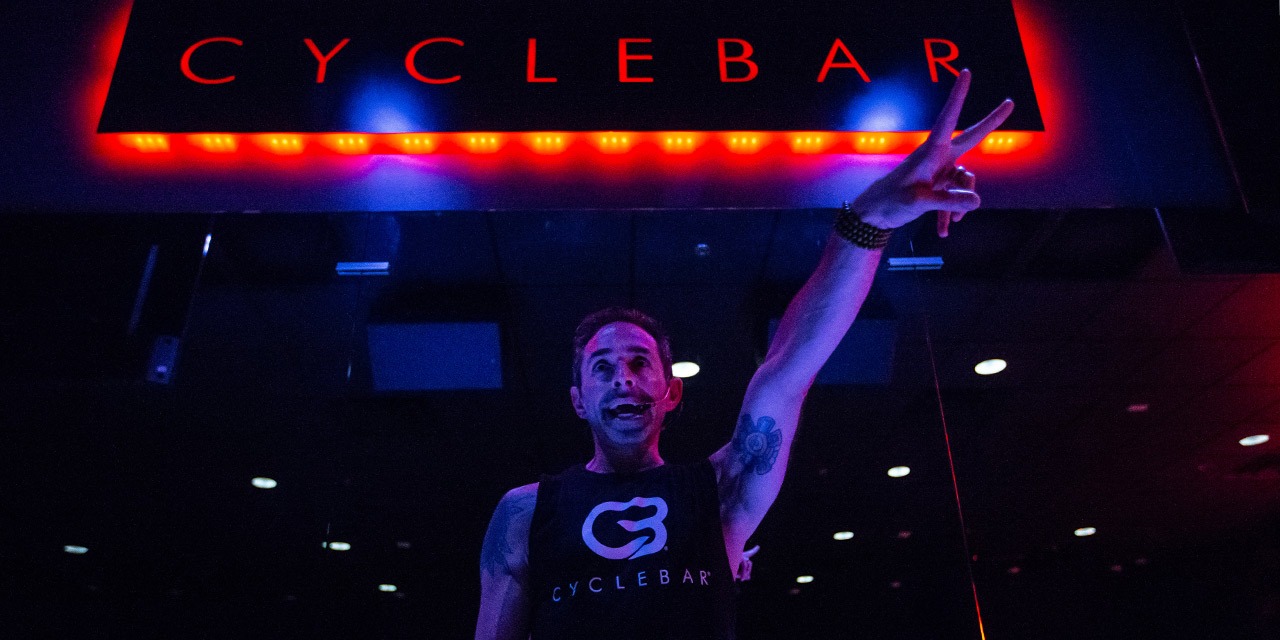 What do you see as the future of indoor cycling?
What do you see as the future of indoor cycling?
Indoor cycling will continue to grow. Smaller locations that are trying to offer more than one modality will drop out and be replaced by the big boxes, but specialist boutiques will continue to be the go-to for those who seek specialised indoor cycling. The big boxes will get people into cycling, who will then feed in to the boutiques for the experience we offer.
In this boutique cycling space, I don’t see SoulCycle or Flywheel franchising. While other brands may pop up, CycleBar will continue to grow and dominate this franchise sector.
CycleBar joins the Xponential family
- Indoor cycling brand CycleBar was the second of eight acquisitions by Xponential Fitness, a company described by Forbes as a “curator of boutique fitness”.
- Led by CEO Anthony Geisler, Xponential Fitness specialises in franchising, with eight modalities now on offer to prospective franchisees.
- Club Pilates was the first brand in the portfolio, with CycleBar acquired in September 2017. A further six brands were added by the end of 2018: Row House; StretchLab; AKT, the dance-based cardio studios; Yoga Six; Pure Barre; and Stride, a boutique running concept offering premium treadmill-based cardio and strength training.
- All brands were selected around two key criteria, says Geisler. Firstly, the modalities inspire him personally. But perhaps even more importantly, Geisler wants Xponential to own “the best and biggest franchised brand in each of our modalities. I don’t want to go into a market and be number two.”
- Now, having reached eight modalities, Geisler is drawing a line: “We aren’t looking at any more acquisitions – Xponential was never intended to cover all modalities. My focus moving forward is on the brands we already own, growing from the approximately 2,500 locations currently sold across the US and expanding all eight modalities internationally.”
Five steps to a perfect cycle studio
1. Deliver an experience, not a class
The member experience is something everyone talks about nowadays, yet many operators fall short of delivering a true experience – something members will want to tell their friends about.
While there are, of course, many different elements that combine to create the perfect member experience, I believe three are particularly important. Firstly, always try to tell a story rather than selling a product. Secondly, engage passionate instructors who genuinely love to teach. And third, try to surprise your participants in every class they join.
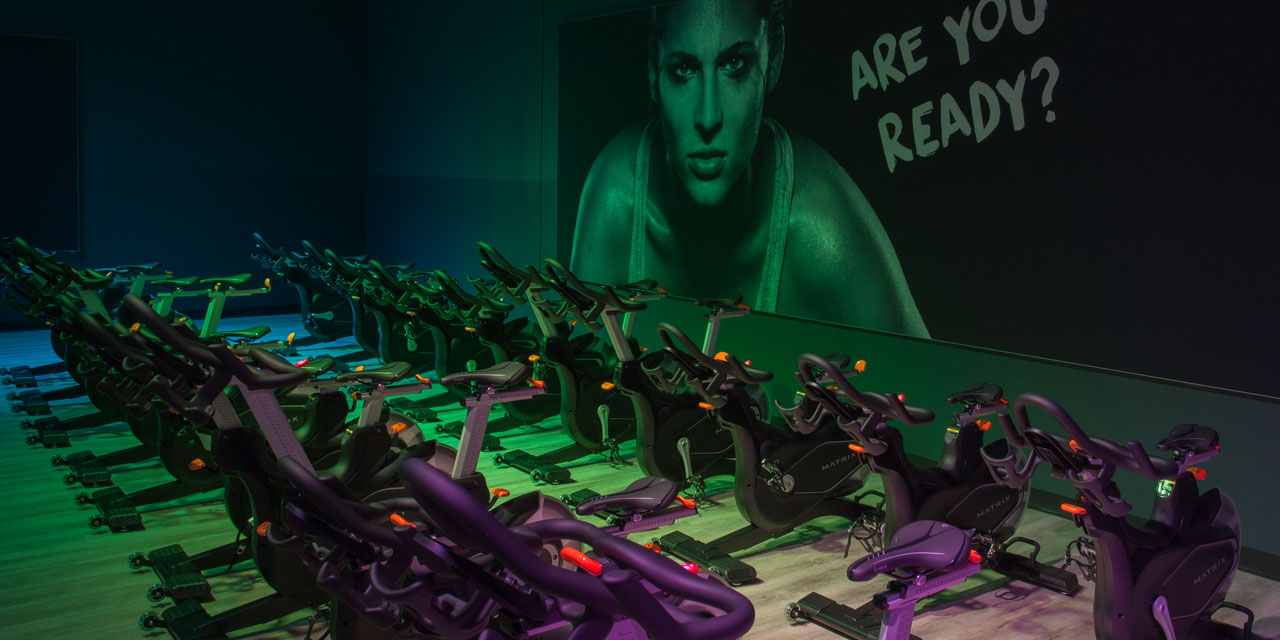 2. Focus on the group cycling product
2. Focus on the group cycling product
Further to tip #1, although it isn’t about selling a product, it’s nevertheless vitally important that the product hits the mark, delivering results as well as a share-worthy experience.
An obvious point here, but use great equipment – and by that, I don’t only mean equipment that’s high quality, but that also feels high quality. Member perceptions are important. Minimise opportunities for distraction too, so riders are immersed at the moment and fully focused on their training. Use large format displays or projection to present stats like heart rate or other performance metrics. Last but not least, create a sense of competition between participants to ensure they push themselves to their limits – and beyond.
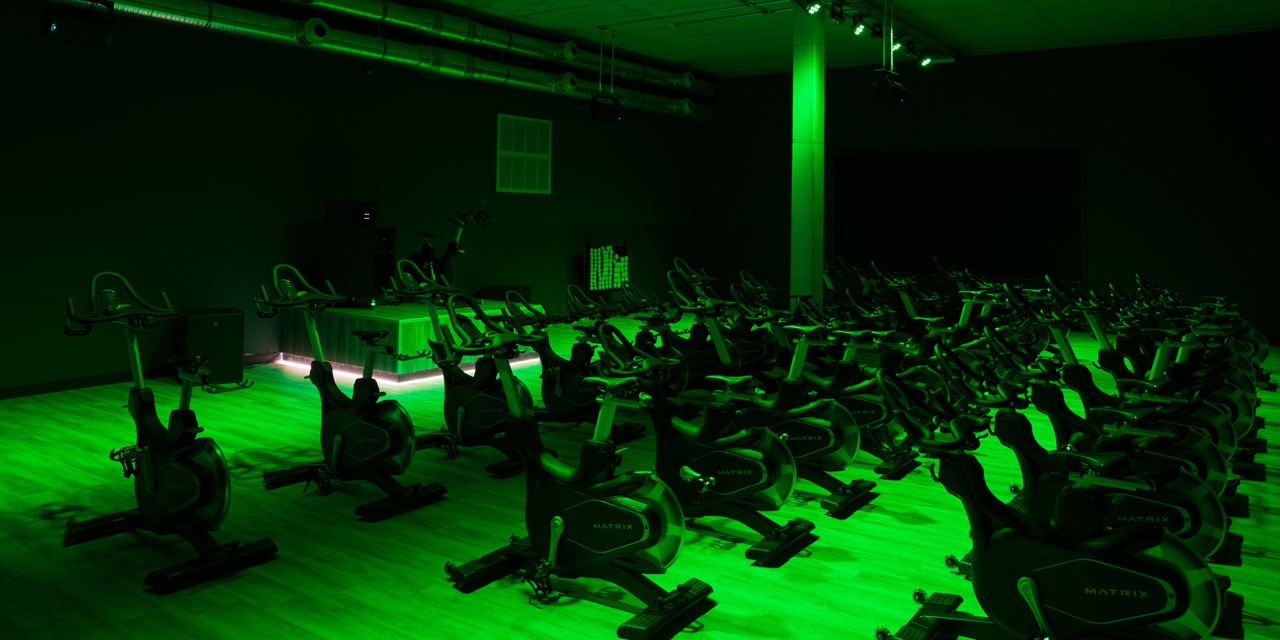 3. Maximise the impact of your studio
3. Maximise the impact of your studio
If your cycle studio looks like someone put bikes onto a squash court, it will always feel like someone put bikes onto a squash court.
Make the most of your studio space – for example, maximising the impact of any unusual architectural features to create unique interior design concepts. And make the most of what’s outside too: if your club is located amid beautiful scenery, consider installing large panoramic windows in your studio. Do, however, ensure it’s a view that will motivate and inspire rather than distract – as noted in tip #2 – and remember there may be a need for blackout blinds over the windows if, for some classes, you want to create a cinematic experience via a big screen.
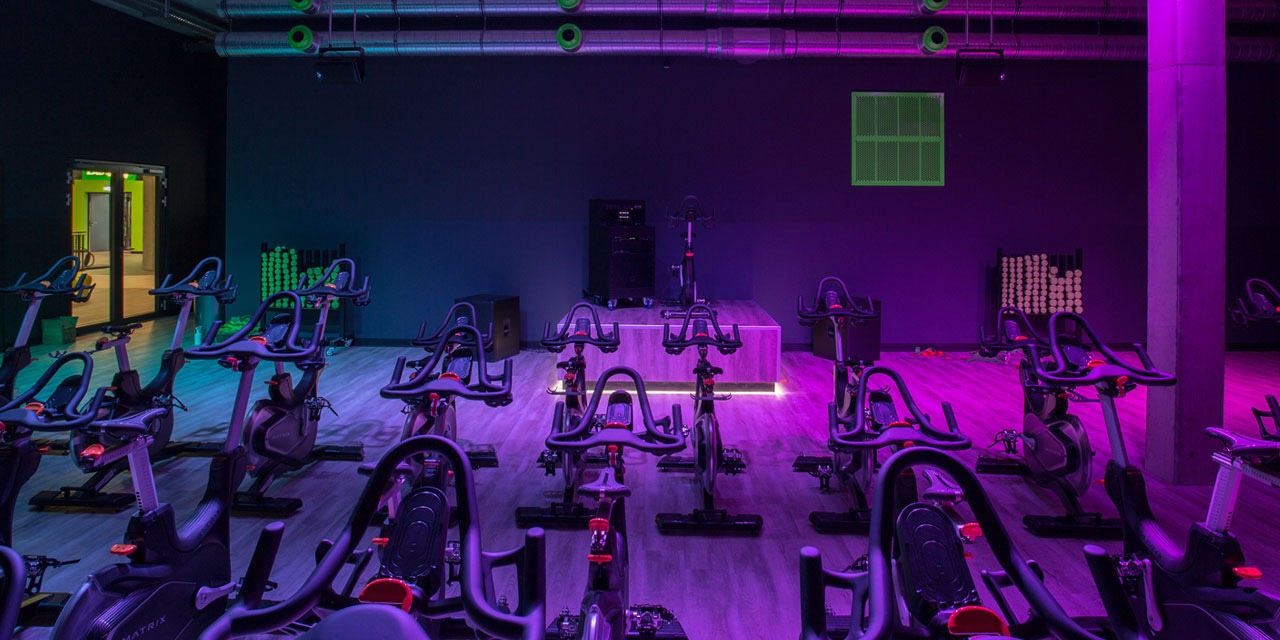 4. Change the look of your cycle studio as often as possible
4. Change the look of your cycle studio as often as possible
Don’t allow your studio to feel the same throughout the duration of a class, as this does little for motivation. Mix it up to keep riders stimulated and engaged.
Opt for a lighting system that supports the training being delivered, with different lighting to sync with the different phases of the workout. And use video projection to further immerse participants in the story your instructor is telling – the journey they are being taken on.
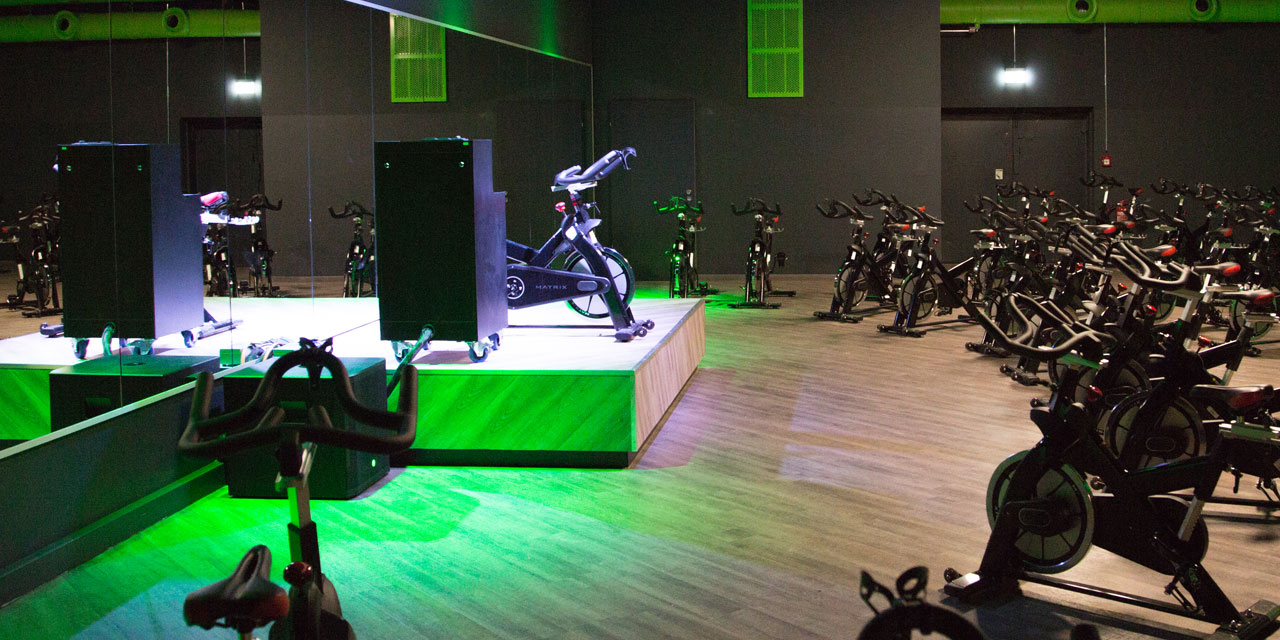 5. Deliver crystal-clear audio at every bike
5. Deliver crystal-clear audio at every bike
A great sound system is vital to every group cycling class. Use an audio system that delivers perfect audio – including clarity and intelligibility of speech – wherever you may be in the studio, at whichever bike. Reduce the risk of any disturbance in sound – reverberation, for example – by incorporating features such as hidden absorption material behind graphics on the walls.
Ralph Butzin
“I used to be a professional handball player, competing in the first division in Germany,” says German cycling legend Ralph Butzin. “In 1993, I injured my knee and went to Switzerland for rehab, and it was there I first came across Spinning – the phenomenon of indoor cycling to music.
“I liked the look of it so I did a class, which just happened to be with Mike Michaels – master trainer for Johnny G, the creator of Spinning. That’s a great way to do your first class!
“I spoke to Mike afterwards and explained that I’d like to do these classes back home, but he told me there were no Spinner bikes in Germany – so I decided to start my own class.”
He continues: “I teamed up with another master trainer, Keith Howells, to launch in the basement of a club in Bielefeld, Germany. We had a squash court space with 11 bikes and a ghetto blaster – and that was it. There was very little structure: we just played music and got people to ride the bikes as hard as they could! But it was really popular: with just 11 bikes, we had to run around eight classes a day to keep up with demand.
“For a long time, this was essentially what I did: instructing Spin classes, creating education for Schwinn, building a national team for Schwinn and later Star Trac. But then a crunch point came when the team split: Johnny G went with Star Trac; most of the other trainers went with Schwinn. And the whole thing just started to move along a path I wasn’t happy with: it became more about selling bikes and merchandise, when really all I wanted to do was train people.
“In 2003, I therefore left to set up my own company: the National Cycling Academy, or NCA for short, which was created as a supplier-neutral organisation.”
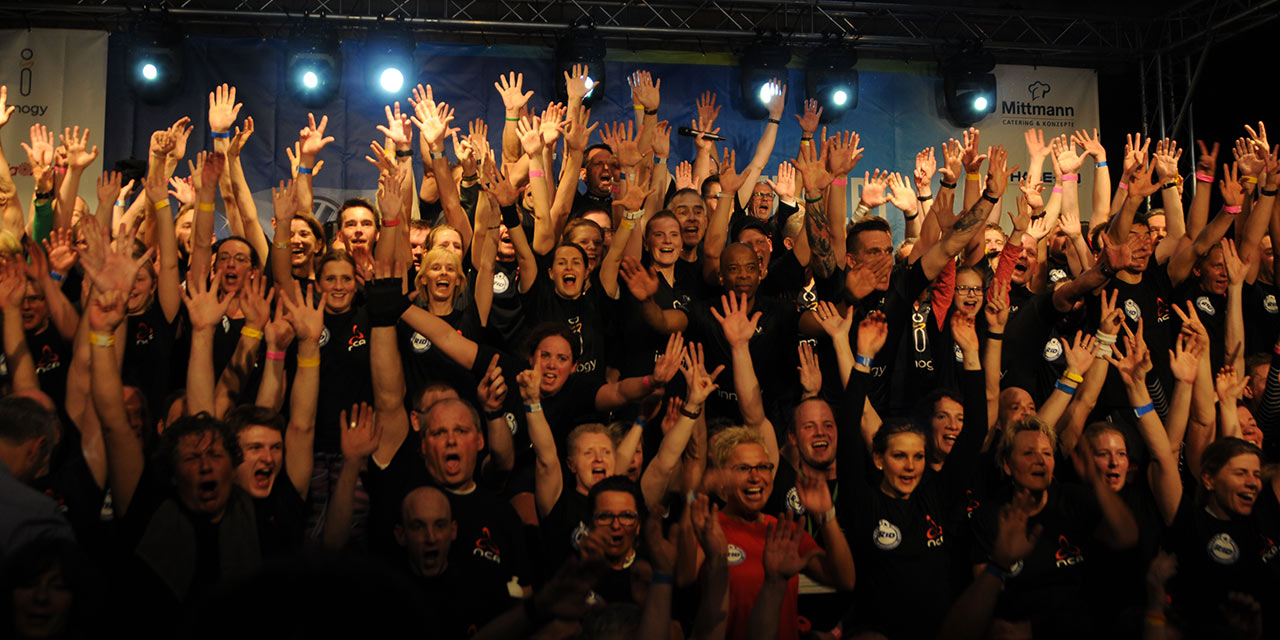
You can’t buy personality
He continues: “At the NCA, we aim to do things a bit differently. Most cycling instructor qualifications take place over the space of one weekend, for example, whereas ours takes two weekends and is always run by two master trainers. There’s just so much you need to know when you’re starting out as an instructor.
“We focus on training – on the science – rather than gimmicks, and encourage our students to always do the same in the classes they go on to deliver. Gimmicks quickly lose their appeal; training is relevant for a lifetime.
“We invite an array of experts to speak to our students too: cardiologists; theatre directors to speak about performance and the delivery of classes; someone to talk about music; someone to talk about muscles, stretching, recovery.
“And we help them find jobs afterwards: we approach clubs to tell them about instructors living locally. This is a free service, firstly because we feel it’s the right thing to do, and secondly because it helps us build a strong network of clubs and trainers.”
Butzin adds: “One thing all of our participants leave our courses with is this simple message: it isn’t about them. They work for the members. If there’s nobody in their class, there’s no need for them as an instructor. They learn to leave their egos at the door and focus on creating a great experience for members.
“In fact, this is partly why we don’t sell other qualifications. In our view, just paying your way through lots of courses doesn’t make you a great instructor. It doesn’t matter if you’re a master trainer or a newly qualified instructor: your personality is the way to people’s hearts.
“If people do feel they want to learn more further down the line, though, we invite them to attend our events for free to chat to our master trainers. Sharing ideas and knowledge is, we believe, the best way to learn, and we give a lot away for free: whatever they want to know, our master trainers share it with them at no charge. We aren’t interested in getting every last Euro out of people.”
He adds: “What this does, of course, is build great relationships between the NCA and the instructors – so when we need to ask for their help, they’re happy to give it.”
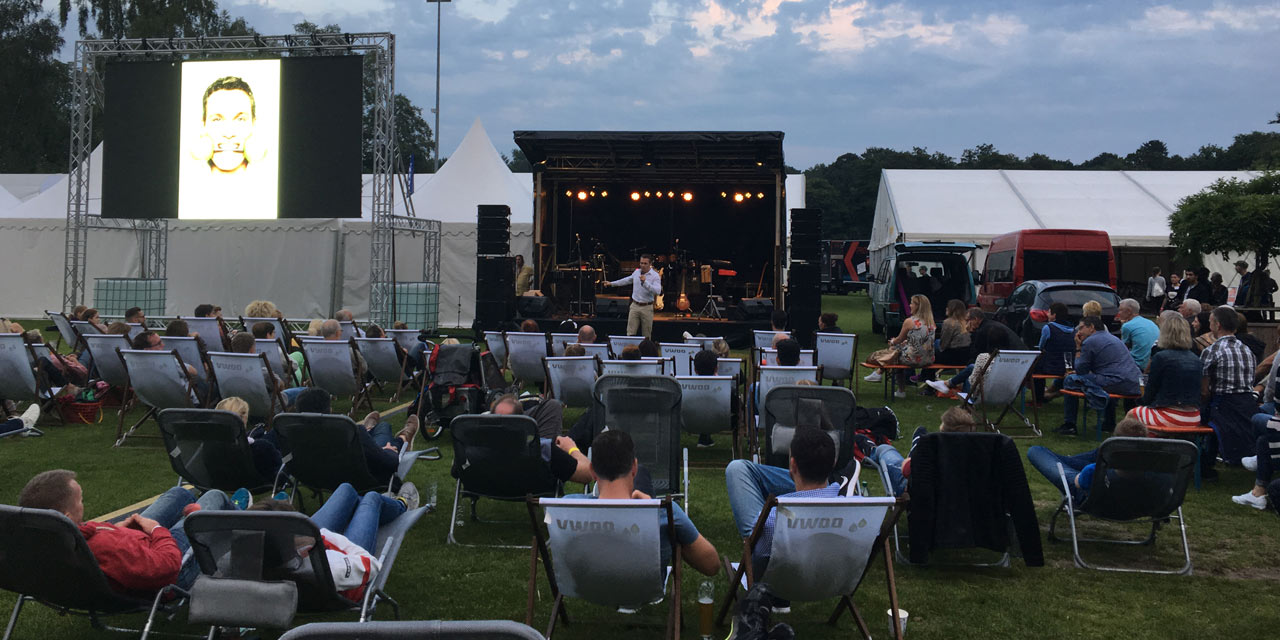
Pursuing a dream
The help Butzin refers to relates to public events he runs under the NCA banner: instructors are invited and encouraged to bring members and other cycling enthusiasts along with them. So, a favour perhaps, but not a huge one – especially as good trainers are invited on-stage to run some of the classes. “I don’t believe in making it just about master trainers,” explains Butzin. “These are events for trainers and their members.”
My dream, when I first set up the NCA, was to run the biggest cycling event in the world
He rewinds to the early days: “My dream, when I first set up the NCA, was to run the biggest cycling event in the world. I started small: my first event was in 2003, with 70 bikes in a sports club in northern Germany. It was an overnight event – eight hours, from midnight to 8.00am – and people had to pay 30 Deutschmark to take part. I did absolutely everything myself: I organised the bikes, drove the lorry to get them to the venue, instructed the classes, gave out water… But it went well, so I decided to scale things up.
“For the next four or five years, I ran two events each year: in the winter, the event took place in a Mercedes Benz centre with around 200 bikes; in the summer, we could go outdoors so had more space, so we ran events with 500–700 bikes in a village called Bad Zwischenahn. The events would go on for anything from 12 to 24 hours, with lots of different sessions and instructors on-stage. Participants could vote on how good they were, with an award at the end for the best trainer. It was a bit like all the reality TV shows nowadays!
“People would also pay to attend these events, and I got lots of sponsors involved too: they liked the fact that, once we’d covered our costs, all the rest of the money raised through these events would immediately be donated to charity… children’s hospices and so on.
“In between these events, I’d travel around the country talking to sports clubs and gyms and running small cycling events for them. I got Erdinger, the beer brand, to sponsor what became known as the Erdinger City Tour: smaller in-club events, where clubs would get alcohol-free beer to give out.”
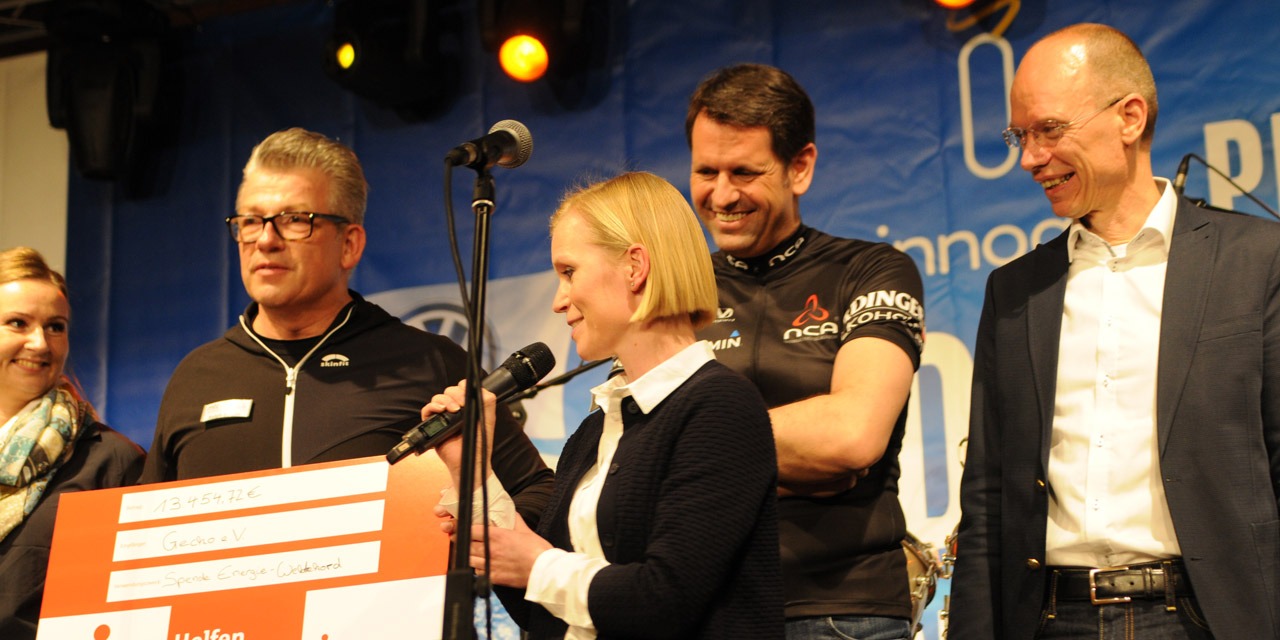
Breaking records
Butzin continues his story: “At this point, the NCA was still just a hobby for me – I had a full-time job working for the government – but in 2006, I decided to leave my job and live my passion full-time, pursuing my dream to create the biggest cycling event in the world.
“I identified the venue I wanted to rent – the AWD Dome in Bremen, northern Germany – and knew I wanted to fill it with 3,000 bikes. I scheduled the event for August 2007 and spent the next 18 months travelling around clubs, running classes for them for free, talking to them about my dream and asking: ‘Please could I borrow your bikes?’ However many bikes they agreed to lend me for the day, that’s how many tickets they got for the event, which they could then offer to their members.
“When the day came, we had a real mix of bikes coming from all over the country, all of which had to be brought to the Dome and taken out again in the same day – because it cost €70,000 to rent the venue for one day but also, obviously, because the clubs needed them back.
“But it worked. We had thousands of attendees, great classes over the space of eight hours, a live band, hot food for everyone, water and fruit delivered regularly to every bike… And it was just a great feeling: everyone was on an emotional high afterwards.
“Admittedly I lost €70,000 on the event, but that wasn’t important to me – I just wanted to make my dream come true. That said, the bank didn’t feel quite the same way: I had to run a subsequent smaller event to make the money back!”
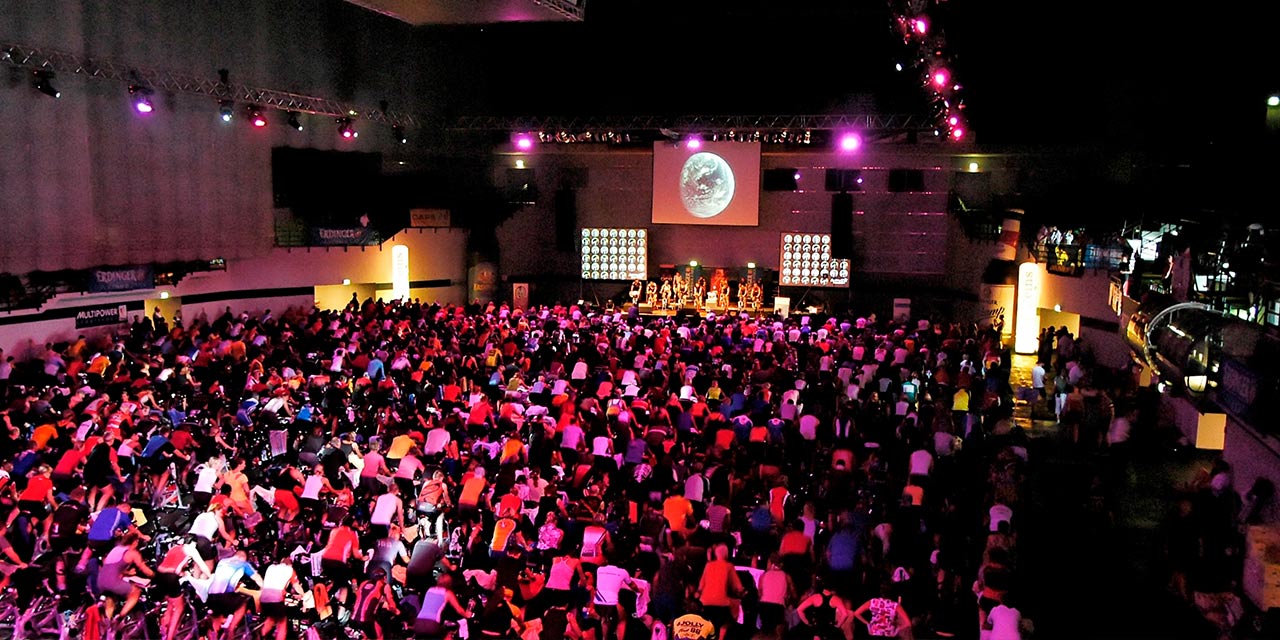
Cycling for energy
Fast-forward to today and the NCA is still running events, with the current wave adopting an energy theme, as Butzin explains: “In 2015, 2016 and 2017, we ran 24-hour events where we attached dynamos to the bikes to capture the human energy being generated, using this to charge the battery of an electric car.
“We actually set a Guinness World Record: 2,500 people – just normal people, not athletes – rode 100 bikes and generated enough energy for the Minister of Economy to drive the car for 130km.”
He adds: “We also continue to raise large amounts for charity: over the last three years alone, we’ve donated around €45,000 to good causes.
“Our next event is scheduled to take place in November 2019. Volkswagen is launching a new car and wants us to run an energy-harvesting event – much like the recent ones we’ve organised – to help promote it. So, we’ll be looking for teams of cyclists to take part!”
The German challenge
But when I broach the topic of new trends in indoor cycling, the exciting boutique studios appearing around the world, and what the future might look like for indoor cycling in Germany, Butzin falls uncharacteristically quiet. “I hate to have to say this, but indoor cycling is dying in Germany,” he says. “Most club operators question the return on investment: they have bikes to buy and maintain, and instructors to pay, but only run perhaps two classes a day. The rest of the time, the studios – and the bikes – are unused. As a result, operators are starting to pull indoor cycling off the timetable.”
He continues: “The NCA does what it can to keep the momentum going, but in the end we do what we do for fun. Meanwhile, very few of the world’s big, powerful cycling brands have a strong presence in Germany. The positive spirit around indoor cycling has gone in our market.
Heart attacks remain Germany’s biggest killer, so encouraging cycling is a great message
“But it isn’t too late. We simply need new inspiration. My idea would be for someone – a pioneering supplier – to buy a lorry and put 50 bikes on it, along with a great sound system, a good sponsor and fantastic instructors. Get out there and show people what great indoor cycling looks like.
“There are 40 major cities in Germany, so spend a year touring. Bring it to the people – let them try it for themselves, then tell them where they can do indoor cycling locally.
“Talk to the operators about their challenges and propose a new model: one where the bikes are on the gym floor rather than tucked away in a studio. There’s no reason at all why indoor cycling classes can’t take place on a gym floor, with the bikes then available for general gym use the rest of the time.
“Get health insurance companies involved as sponsors, so the costs are covered. Get in touch with the local authorities to find a neutral space where all club operators will be happy to go: you’ll get the authorities on-side by promising to donate every cent of the €10 participation fees to local charities. Get the Health Minister aware. And secure TV and other media coverage to create a buzz around the whole thing; heart attacks remain Germany’s biggest killer, so encouraging people to cycle is a great media-friendly message, as is donating all proceeds to local hospitals.
“If we get the right people on-board, we can do this.”
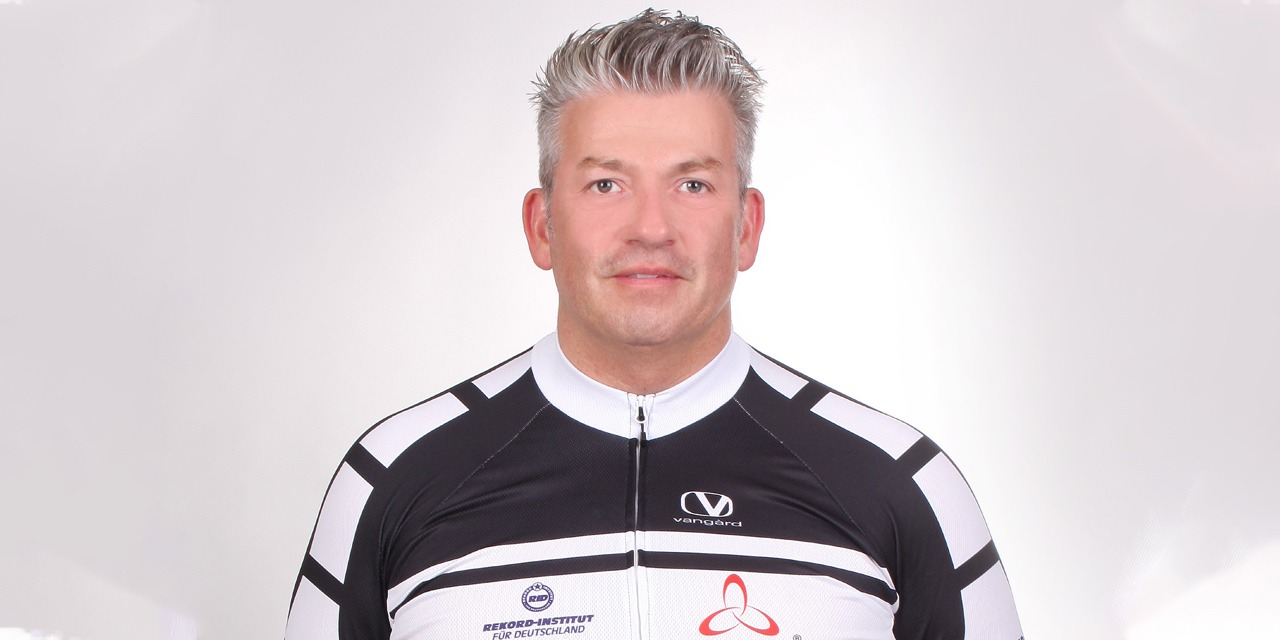
Home Delivery
To say the at-home indoor cycling market is booming would be an understatement. Ignited by US-based Peloton back in 2013, when it first launched its bike on Kickstarter, the market has gained strong momentum over the last few years in particular. We’re seeing major new players enter the fray and a surge in consumer demand: recent research by Les Mills found that 85 per cent of gym members now also work out at home – and cycling is without doubt one of the disciplines seeing the greatest innovation and interest.
Peloton: Flying high
Let’s start with Peloton which, following months of speculation, in June revealed plans to launch an initial public offering (IPO). The number of shares and the price range for the proposed offering had, at the time of going to print, not yet been determined, but the announcement marks the culmination of a strong 12 months for the brand, which is currently flying high with 1 million-plus users, a US$4bn valuation, sales of US$700m+ in its most recent fiscal year, a predicted 6.2 per cent share of the US gym equipment market by the end of its current fiscal year, and successful roll-outs into the UK and Canada.
Peloton is also now gearing up for entry into its fourth market – Germany – later this year. This will mark the brand’s first foray into regular non-English language instruction, with bespoke content set to be created: German-speaking indoor cycling instructors will be added to Peloton’s roster, at this stage based out of Peloton’s London studio. Hundreds of existing English-language classes will also be made available with German subtitles.
Other plans for Germany include a network of branded retail showrooms in the major cities, allowing consumers to ‘try before they buy’; the bike can also be purchased online, retailing at €2,290 plus a €39 monthly fee to access classes.
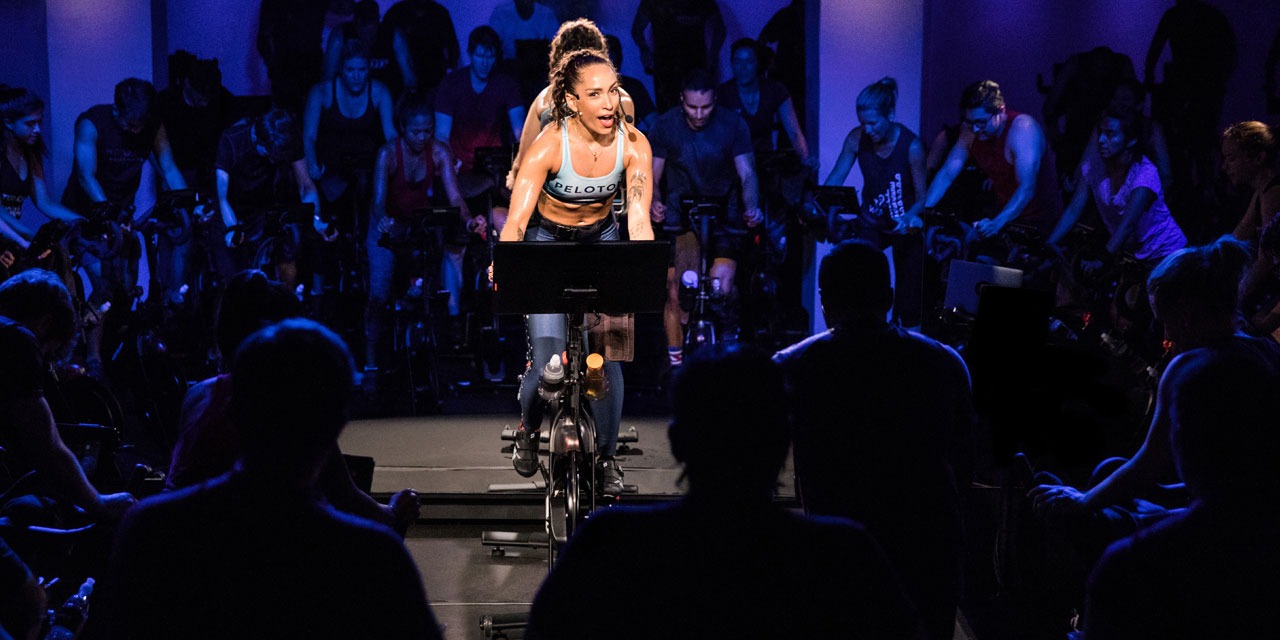
While this price point may seem ambitious judged purely against the predominantly low-cost German gym market, in fact, the at-home market is a different story, says industry veteran Jon Johnston: “In my experience, the price point for home fitness products has held up better in Germany compared to other markets.“
Kevin Cornils, Peloton’s international managing director, is certainly confident, explaining: “Germany is Europe’s largest fitness market, where more than 10 million people belong to a gym, so it was a natural next step for Peloton.“ [Read our recent interview with Cornils here]
And as Leisure Database’s David Minton observes: “The reality is that Peloton will go everywhere, because it has so much money. In the last six years, it has spent US$1bn. If it spends the same again in the next six years, it could be in at least 100 countries.“
Back to Plan A
That said, things aren’t all rosy for Peloton, which has currently pulled out of the commercial space to focus exclusively on the at-home market – no doubt at least in part the result of its widely-reported lawsuit over music licensing. Observers do, however, predict a return to the commercial space – potentially with a new bike – once the licensing issue has been addressed.
And Peloton has unquestionably struck a chord with today’s convenience-driven, experience-led consumer. Global fitness industry observer Emma Barry comments: “Peloton was not the first to deliver at-home workouts by a long shot, riding the slipstream of greats before it, but this fit-tech unicorn has nevertheless delivered a software-hardware-subscription solution happily touting a 2-foot commute. It has raised the at-home stakes by elegantly connecting experience and community – linking riders to live-streamed NYC rockstars, and each other – and making it sticky enough to produce startling engagement: an average 13 rides per month.“
Boutique ventures
Little wonder, then, that Peloton has spawned a whole raft of copycats over the last few years.
Live streaming will be a great way for us to extend our brand to new audiences outside of London – 1Rebel.
Around the same time as Peloton announced its upcoming German launch, US-based Flywheel – with its 42 studios across the US – teamed up with Amazon to take its Flywheel Home Bike to a broader audience. The bike retails on Amazon for US$2,248 (with tablet) or US$1,948 (bike only), with two months’ access to Flywheel’s programming included for free. Although the bike originally launched towards the end of 2017, this new deal with online juggernaut Amazon marks a significant ramping up of Flywheel’s at-home ambitions.
And it’s surely just a matter of time before SoulCycle follows suit. “SoulCycle owner Equinox is looking at every opportunity to expand its reach,“ says Minton. “The space it has created in New York – with its first hotel alongside an Equinox health club, Rumble, SoulCycle all in the same place – shows the scale of its ambition. It won’t be long before we see Equinox and SoulCycle beamed into the home.“
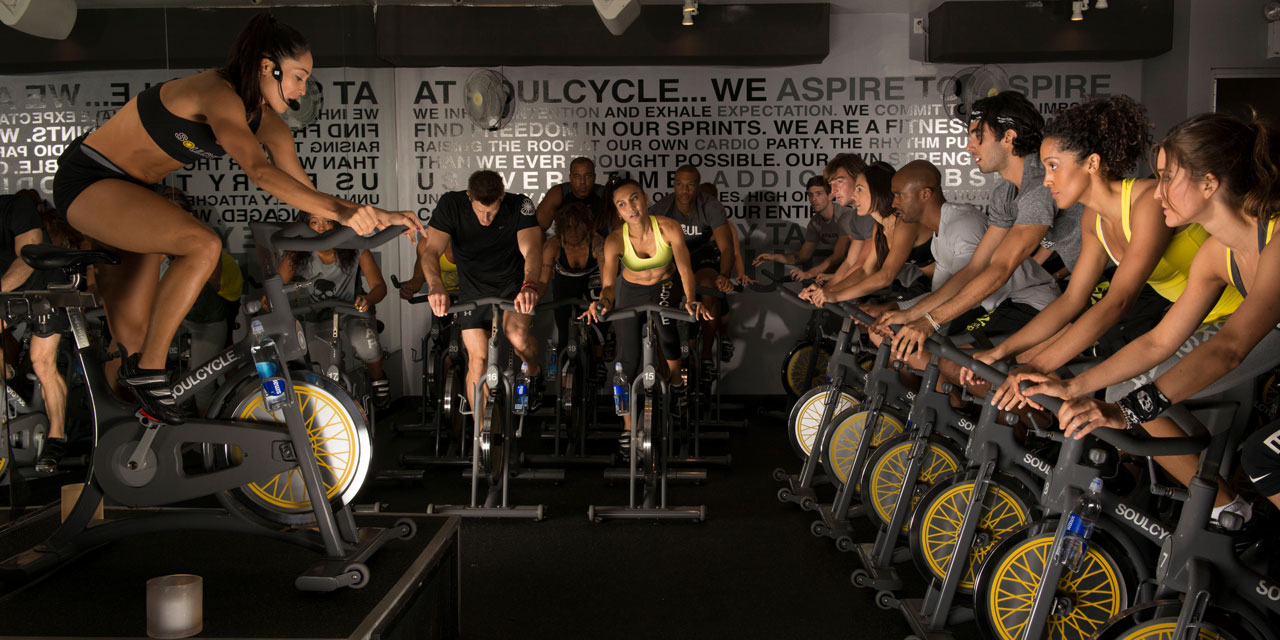
Meanwhile, other innovations are harnessing the power of partnership to come to market, with each partner playing to their respective strengths: equipment manufacturers creating the hardware; operators coming on-board as content providers.
Late last year, Italian equipment manufacturer Technogym announced its entry into the dynamic at-home group exercise marketplace. Its Technogym Live digital platform – home to carefully curated class content – will be accessed through a range of Technogym Live equipment: a new bike, as well as other home equipment including a treadmill and a rowing machine, will all feature a special console. As with Peloton, users will be able to access live-streamed classes as well as a comprehensive on-demand library.
Classes on the Technogym Live platform will be created in collaboration with a specially selected line-up of operator partners – and this is where the boutiques come in again, with the line-up already including Virgin Active Revolution in Milan and London’s 1Rebel, which will be live streaming from its cycling amphitheatre in Victoria.
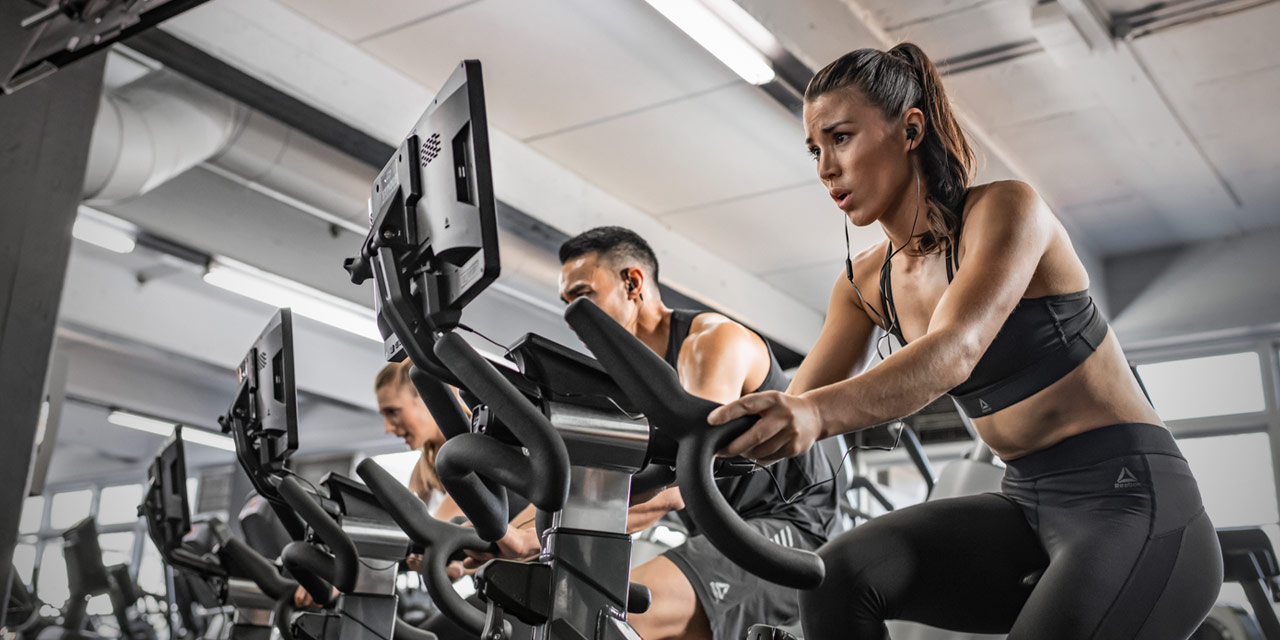
“We’ve been recording a catalogue of on-demand classes since January, and will be live streaming a number of peak classes when the bike launches, which I expect to be September,“ confirms 1Rebel’s James Balfour. “It will be a great way for us to extend our brand to new audiences outside of London.“
The Les Mills Virtual Bike was designed for the gym floor, but it’s easy to see how similar bikes could move into the home exercise space.
On-demand survival
And it’s easy to see how this market – equipment manufacturers partnering with content providers to create at-home solutions – might continue to grow and evolve.
Already on the market are a couple of products which, at this stage, have been designed with a B2B audience in mind – a way for operators to keep their gym floors competitive in an era where consumer expectations are being shaped by the likes of Peloton. The Les Mills Virtual Bike, created in collaboration with Stages Indoor Cycling, launched late last year, while a prototype of the Wexer Body Bike was showcased at FIBO 2019. Both products allow users to access a range of high quality on-demand virtual classes: the former focusing exclusively on Les Mills RPM, SPRINT and TRIP; the latter offering access to Wexer’s top cycling classes from a range of content providers, as well as complementary floor-based workouts which can be done post-cycle thanks to the bike’s 180-degree swivel screen.
Although currently B2B products, it’s hardly a stretch of the imagination to envisage similar bikes being made available for at-home use in the longer term. Indeed, Wexer Body Bike is already exploring options to allow operators to sell its bike to their members – potentially even white labelled with their own branding – for at-home use. “In addition to creating a new revenue stream for operators, this would allow gyms to extend their ecosystem into members’ homes,” confirms Body Bike CEO Uffe A Olesen.
And this is key to gyms’ survival in the on-demand economy, says HDD Group CEO Kim Hessellund: “Even though we have had time to prepare in Europe, it seems we’re still surprised by our ‘new’ competitors: many gyms still don’t have a clear strategy to compete in this space.
“We need to learn from Peloton’s B2C success and disrupt the disruptors, introducing new digital solutions that allow gym members to exercise anywhere, any time. I’m confident this flexibility would allow operators to offer a total health community in a way the likes of Peloton never could.“
“It’s not a binary conversation,“ confirms Barry. “While some consumers will prefer predominantly physical or digital experiences, most will converse with the greater ecosystem, consuming content when and where they choose – physically, digitally and everywhere in between.“
An exercise ecosystem
And why stop at simply selling bikes to members when, just as boutiques such as 1Rebel have already done, other operators could also become content providers themselves?
Minton continues: “I think we’ll see the merging of hardware and software quite quickly over the next two to three years. We’ll see more operators selling ready-made products: buying a bike with a live streaming facility, for example, which they can sell on to members and live stream their own classes. I can see the likes of David Lloyd Clubs doing something like this.“
It would certainly be a logical progression, as tech advisor and entrepreneur Bryan K O’Rourke explains: “We’re already seeing McFIT and other gym brands entering the content streaming business, and it’s just getting started. Brands will have to make decisions around how and where they wish to compete, given consumer expectations.
“Cloud computing, quality video production and enterprise platforms are already enabling businesses to deploy content solutions, at scale, more and more economically. You can launch streaming solutions relatively inexpensively. YouTube now has a subscriber model.
“The bottom line is that, if your content concept appeals to a certain segment, you – as a fitness professional or business – can already become a global provider to users directly. Indeed, there are fitness studios already making good money streaming their content to exercisers around the world.“
And this will only go up a gear as hardware and software move closer together, confirms O’Rourke: “There will no doubt be increasing competition, as several well-financed entrants are now planning on entering home cycling with equipment and platforms.
“There is certainly enough demand – people expect to have their fitness experience available to them whenever and whenever they choose – but more importantly the economics of delivery are going to become less expensive as well. When it comes to health and fitness as a frictionless service, what we’re already seeing is only the beginning.“
Good & bad news
All that said, Balfour is quick to sound a note of warning. “There’s good and bad news about the at-home market,“ he says. “There’s a proven model of demand and Peloton has low attrition rates, although that isn’t overly surprising: once you’ve bought a US$2,000+ bike, you’re unlikely to switch to another brand unless you have a terrible experience, and you also tend to keep paying the monthly fees.
“However, as far as I’m aware, Peloton hasn’t yet made a profit. It has dominated the market with a first-mover advantage and spent a lot of money to drive a big valuation – some sources are even touting £8bn as a pre-IPO price – but we shouldn’t be side-tracked by this. Although this trend is here to stay, ultimately nobody knows the value of this market; given we’re talking about US$2,000 pieces of home equipment, it has to be finite.
“It’s also important to recognise that, although I personally believe Peloton risks spending too much to grow, its price tag and consequent retention rates could mean its first mover advantage clinches a ‘winner takes all’ situation. Even if it doesn’t, the market is about to get very crowded.
“For me, the important thing is to be pragmatic. Certainly, in our venture with Technogym, I believe every bike should be profitable, otherwise, it will be a distraction for us. This is where Technogym’s economies of scale, as well as our ability to use our studios as retail outlets to sell the bikes, will come into play.“
Welcome the big brands
The crowd to which Balfour alludes is in fact already forming, including more affordable options for those not able to stretch to a Peloton-esque price tag. BKool, for example – a Spanish turbo trainer manufacturer that supplies UCI World Tour cycling teams – already manufactures the BKool Smart Bike, which retails through the likes of Powerhouse Fitness and Sports Tiedje for £1,199, plus £7.99 a month for on-demand workout content.
The bike has no integrated screen – classes are accessed via an app and can be cast onto a TV screen – but once connected to the user’s personal device via Bluetooth, the app takes control of the gearing, automatically adjusting resistance in response to the class profile or route shown on-screen.
“The best way to think about the future of at-home cycling is to forget about cycling altogether.”
More product launches are sure to follow in what’s set to be an increasingly competitive sector – one that now has the attention of the big consumer brands. Says Minton: “The big players have realised it’s all about entertainment in the home, about creating a great at-home experience. You just need to look at the likes of TCV – a lead investor in Peloton’s recent US$550m financing round – which has also invested in brands like Spotify and Netflix. We really are just seeing the start of all of this.“
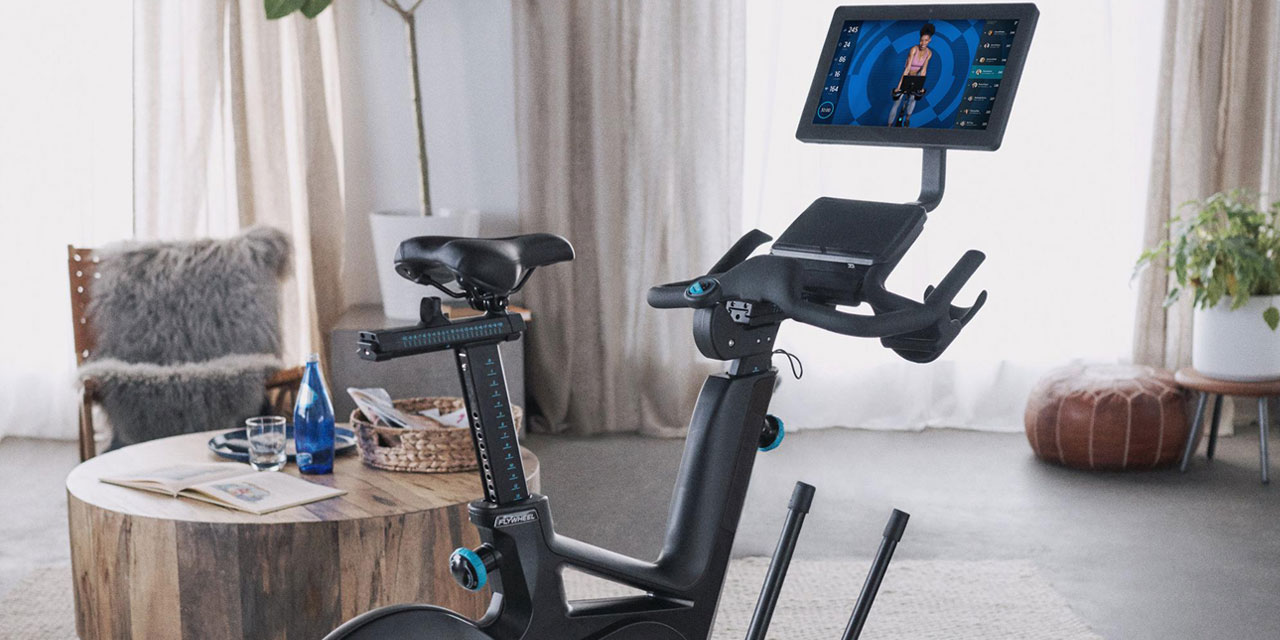
Barry agrees: “GAFA – Google, Amazon, Facebook, Apple – are rubbing their hands in glee as they prepare to stretch out their long arm of end-to-end product, service and delivery to our consumer. With the accelerating force of AI and ongoing development of VR and AR, fitness will soon be as engaging as PlayStation for a 12-year old boy.
“The best way to think about the future of at-home cycling is to forget about cycling altogether. Think of it as just another service you’re passionate about receiving. Think food. Think fashion. Think human behaviour. Amazon has primed us to expect immediate delivery by drone or robot; Netflix is feeding us intoxicating content based on our preferences; Fortnite has us adventuring off-world with friends. These examples tap the tenets of convenience, hyper-personalisation and community – which brings us back to Peloton.“
She concludes: “Moving forward, the coaching capacity and ability to enhance the experience will be a dimensional shift in exercising. Tech will help take us to dizzying heights of new sensation. Our biometrics will directly inform our optimal programming and nutrition plan, while personalised nudges throughout the day will keep us on track. At-home workouts are all set to blow the ceilings off.“


